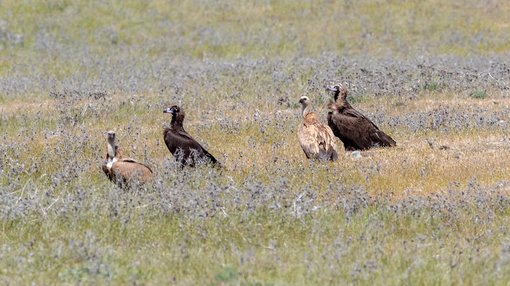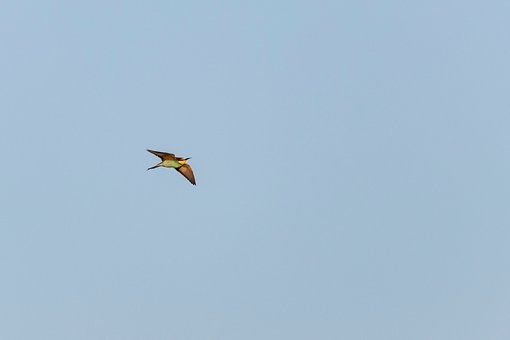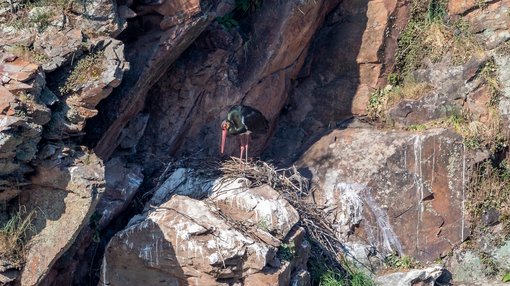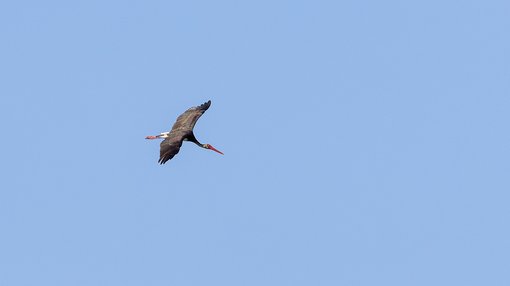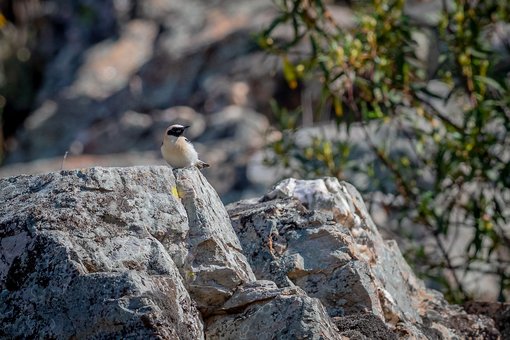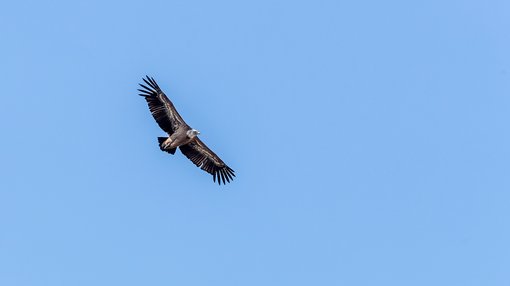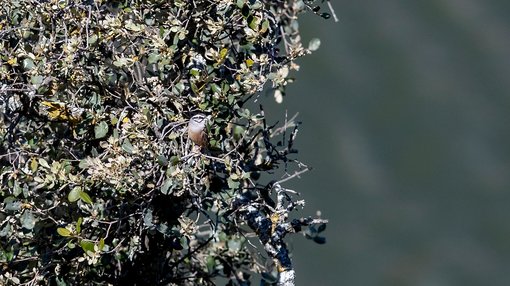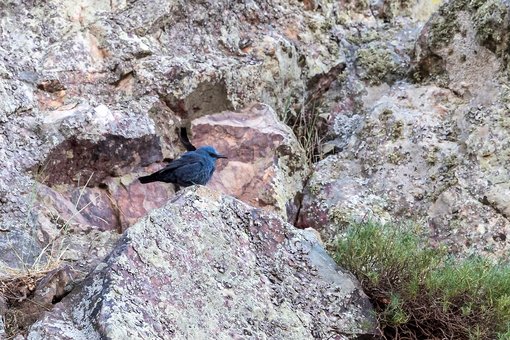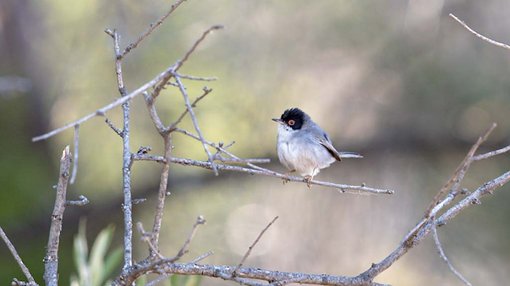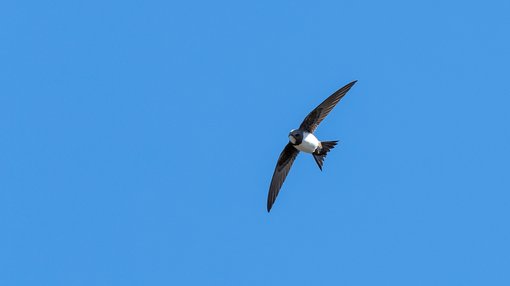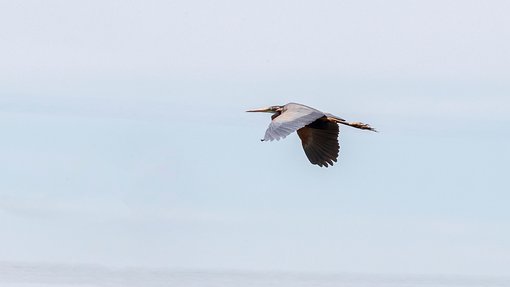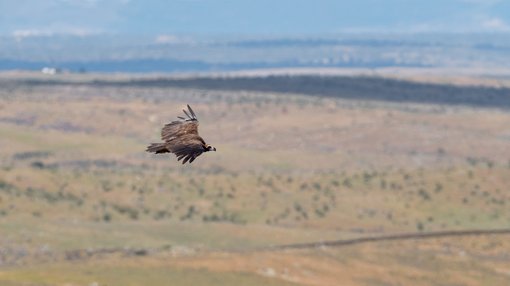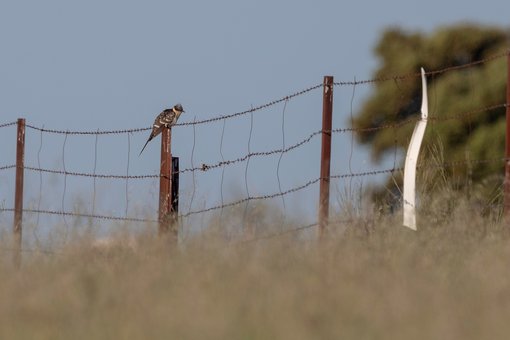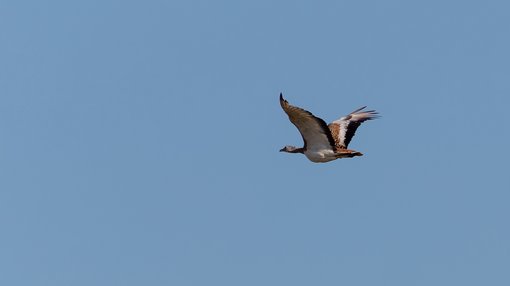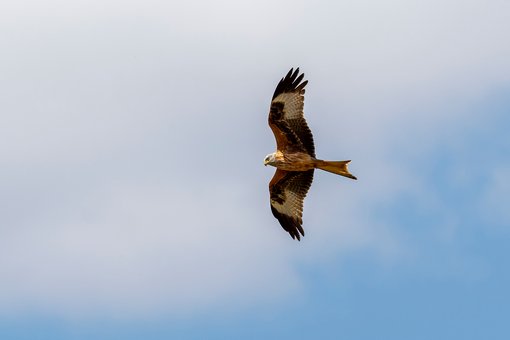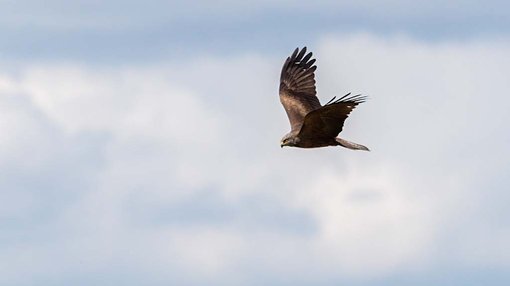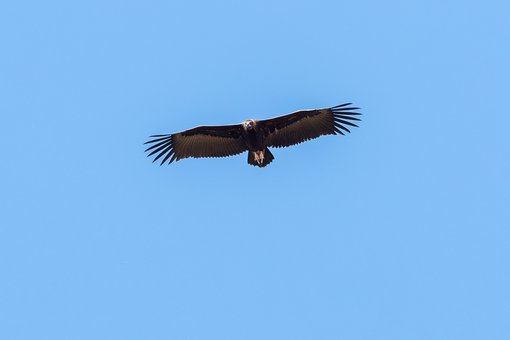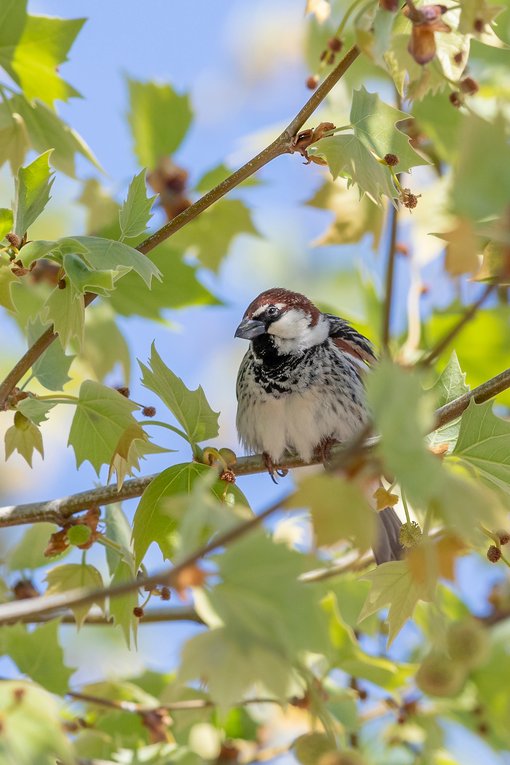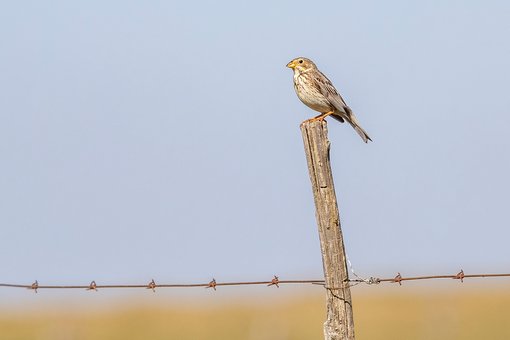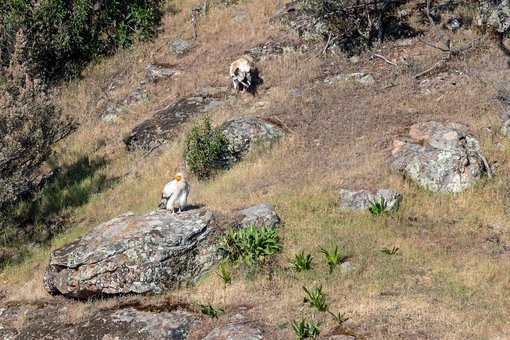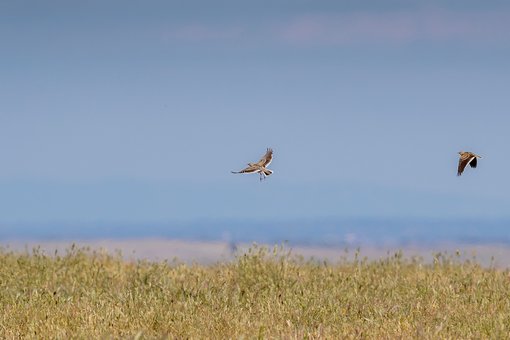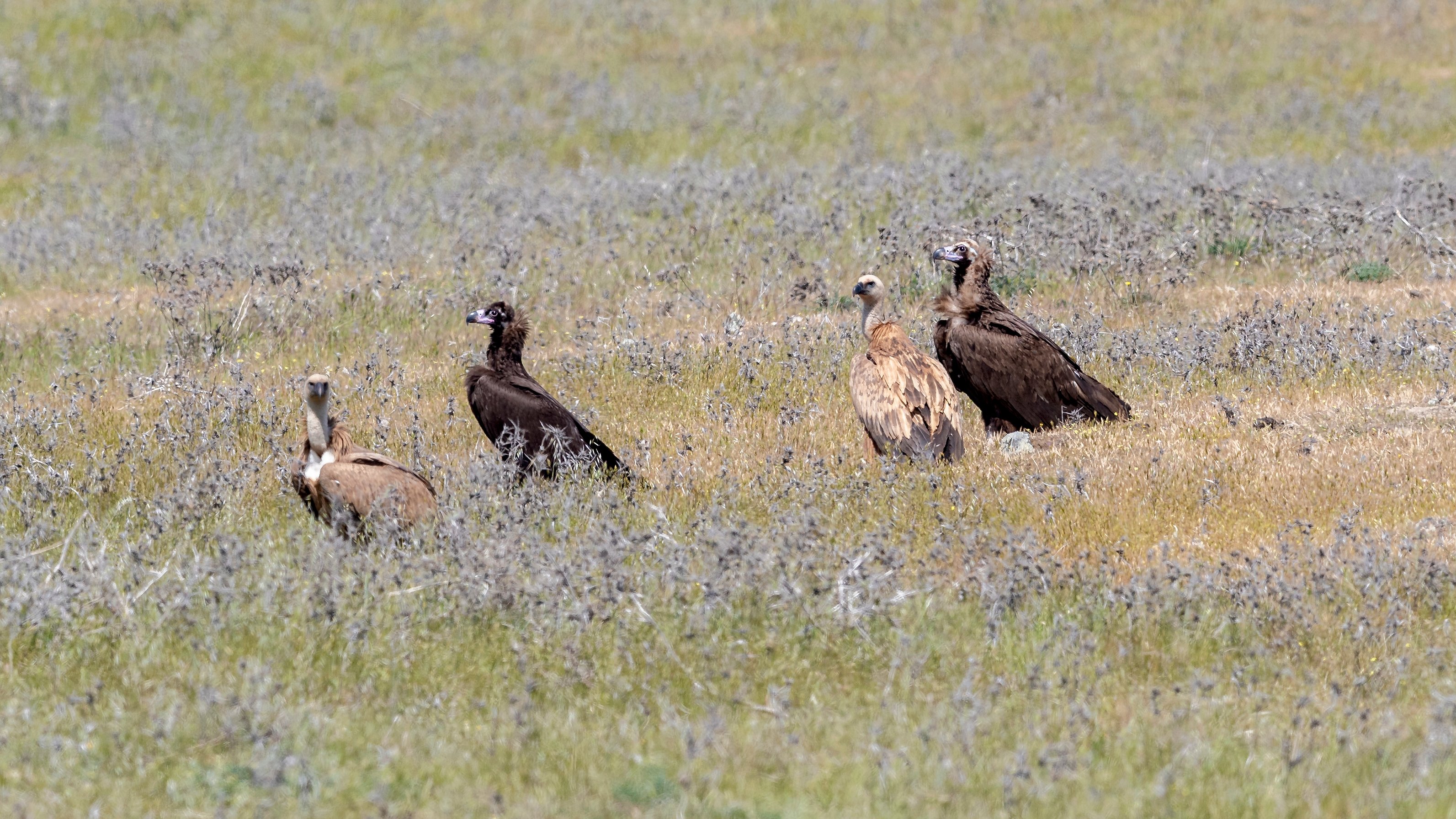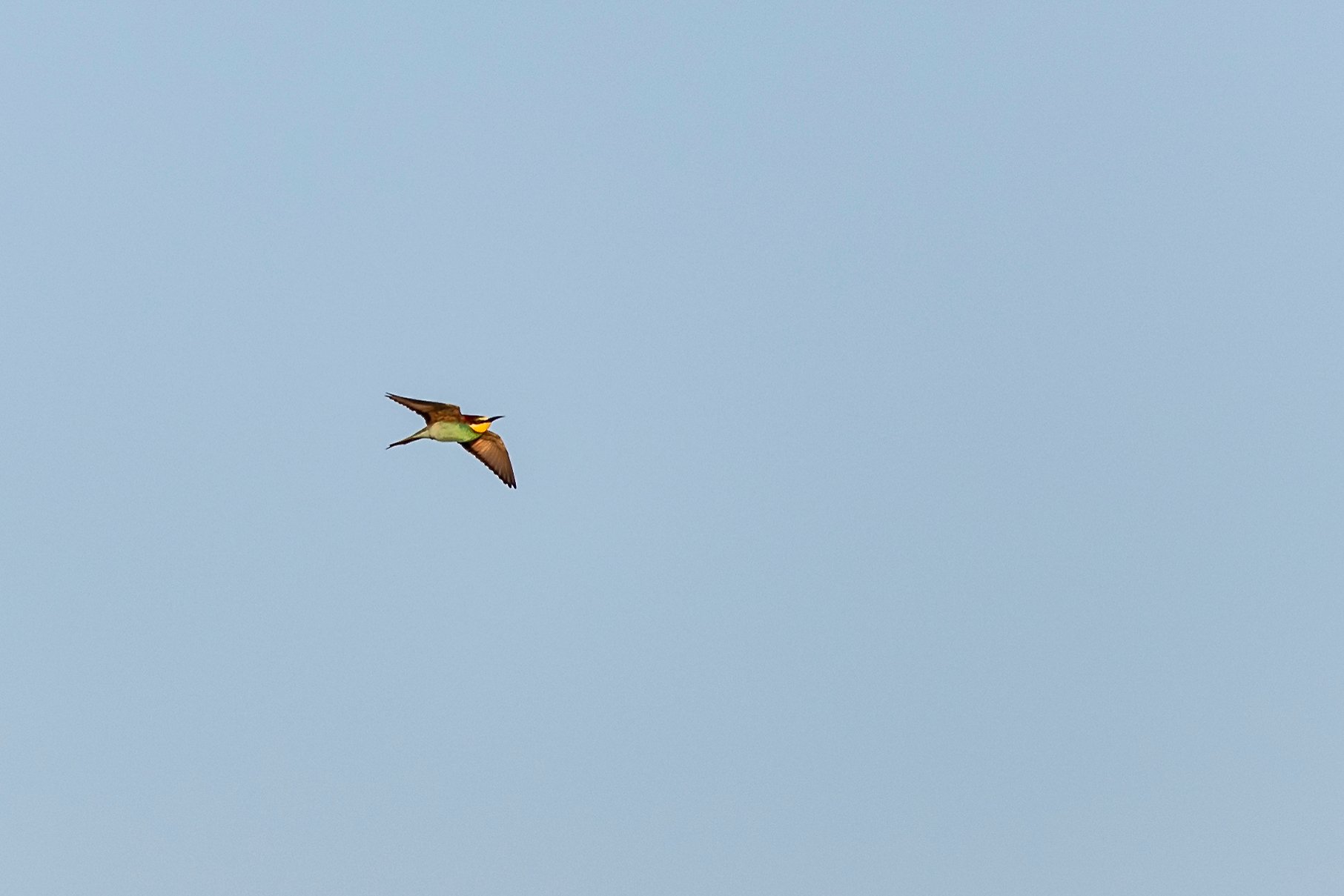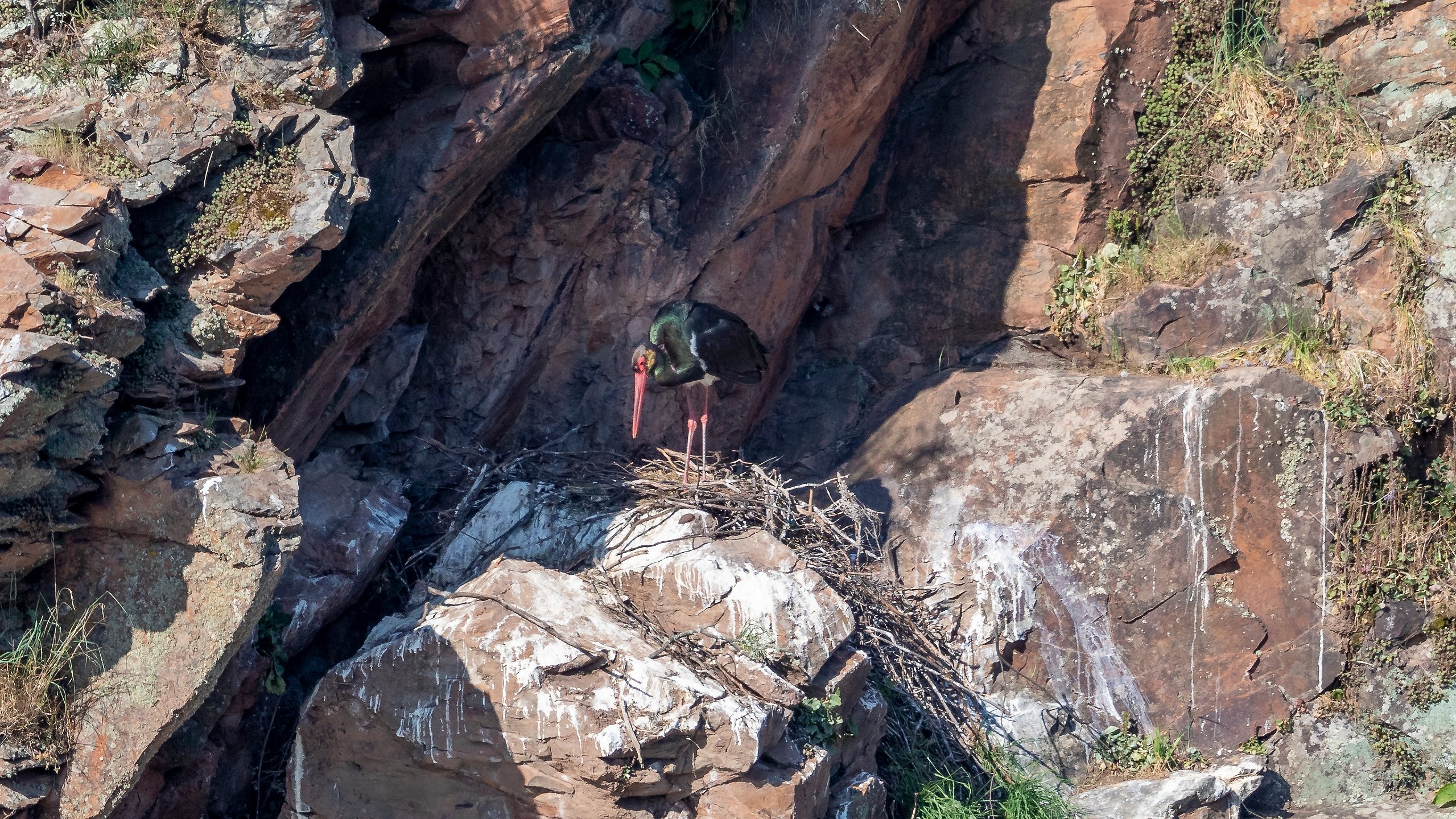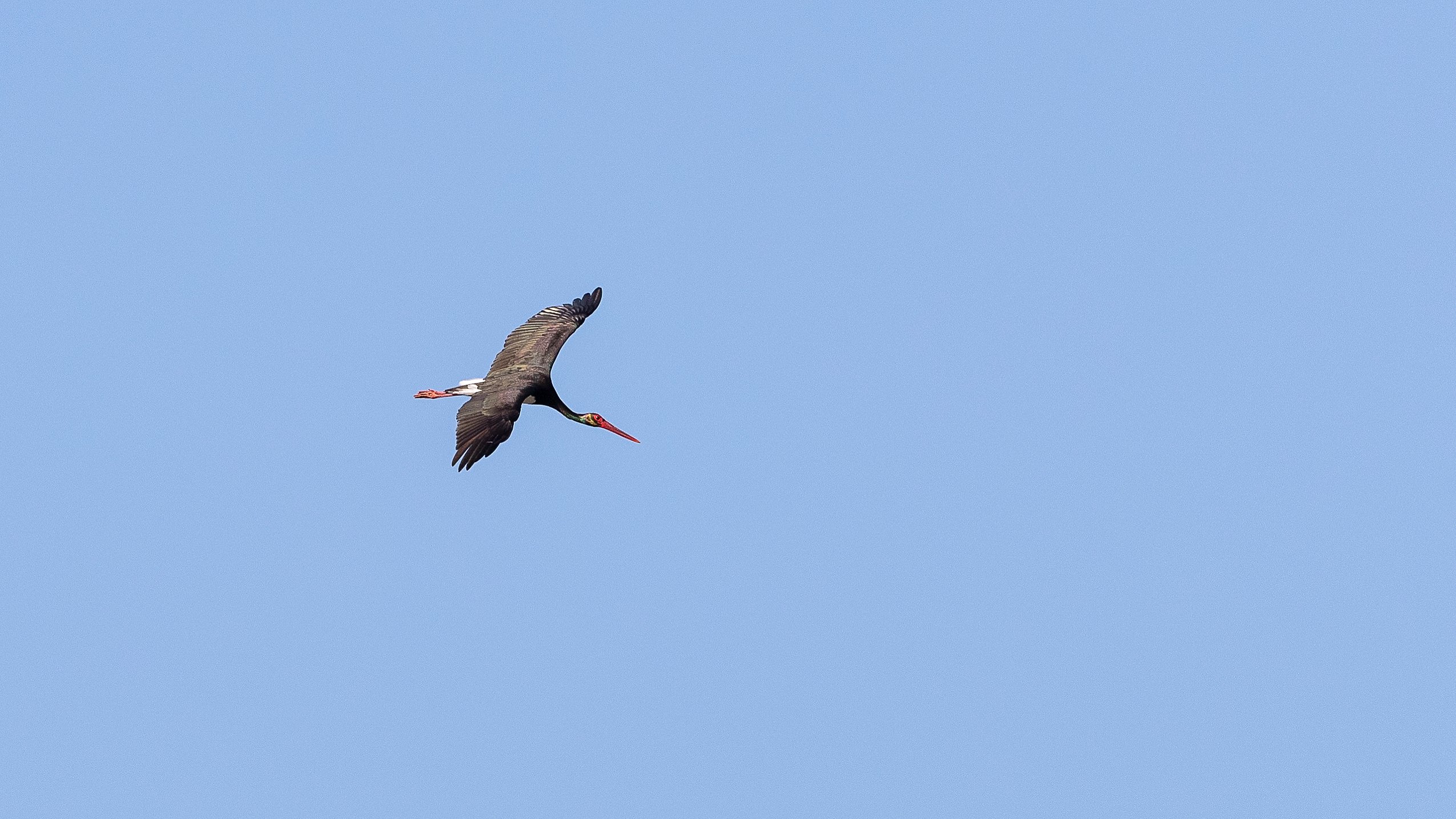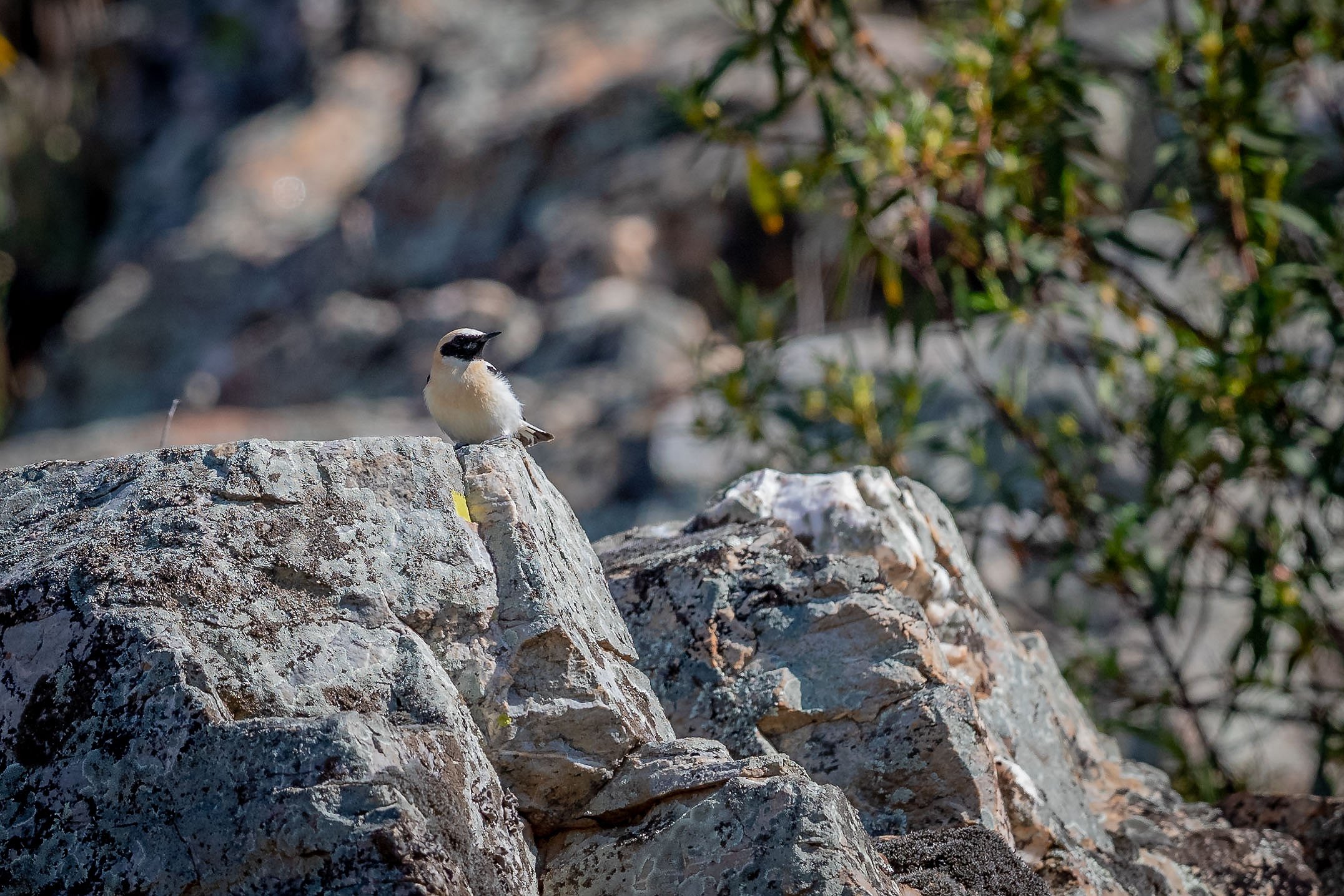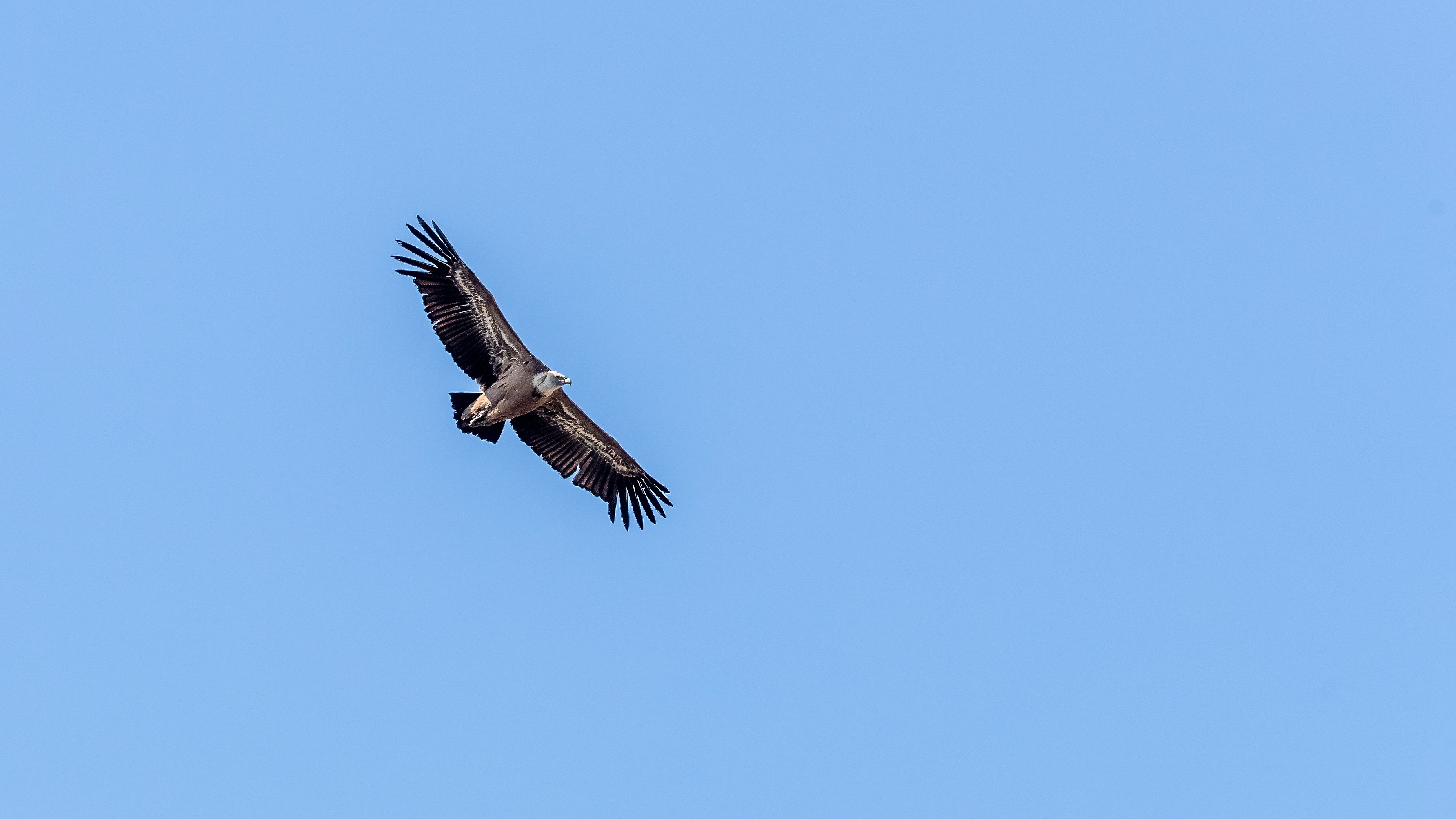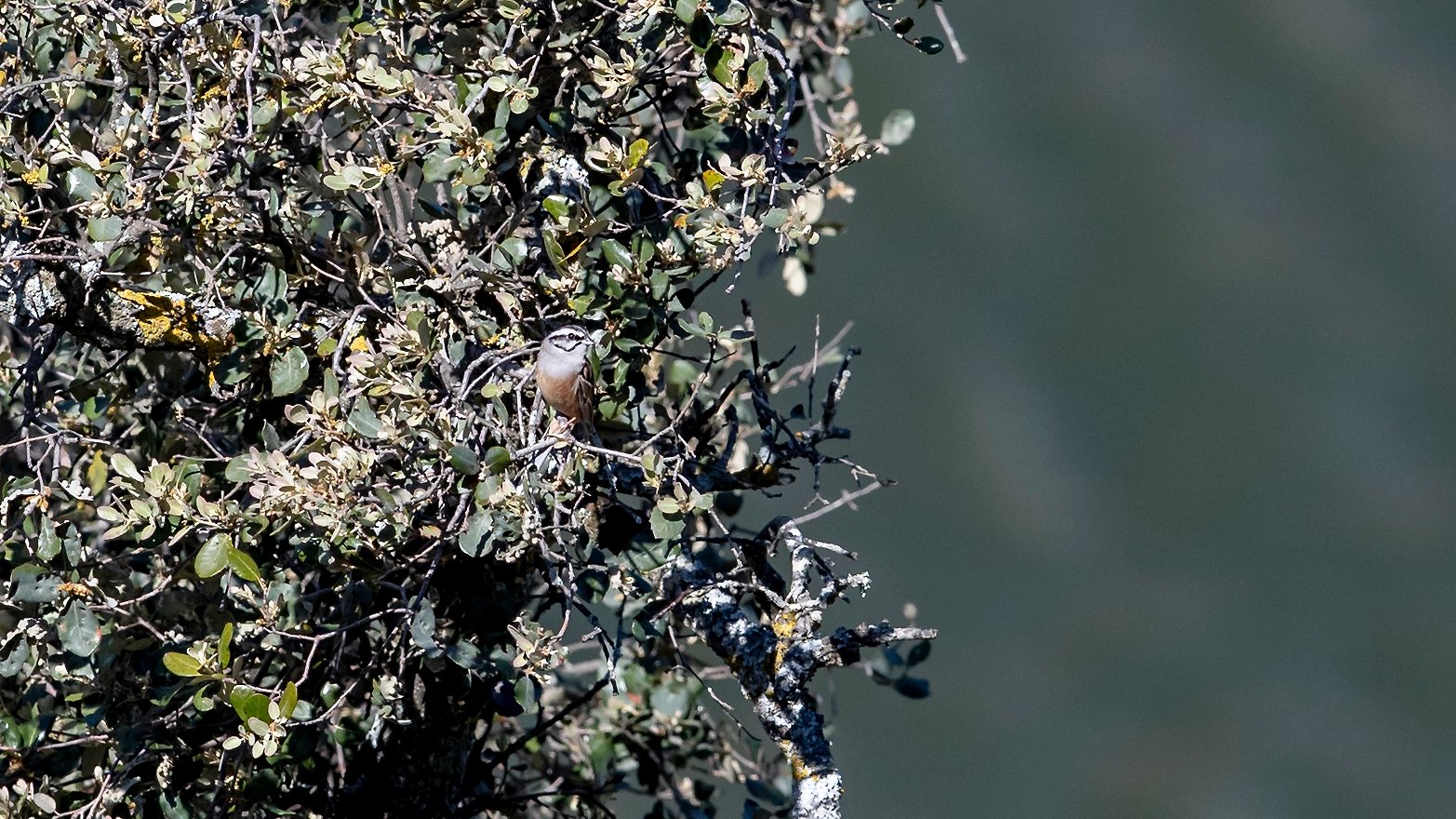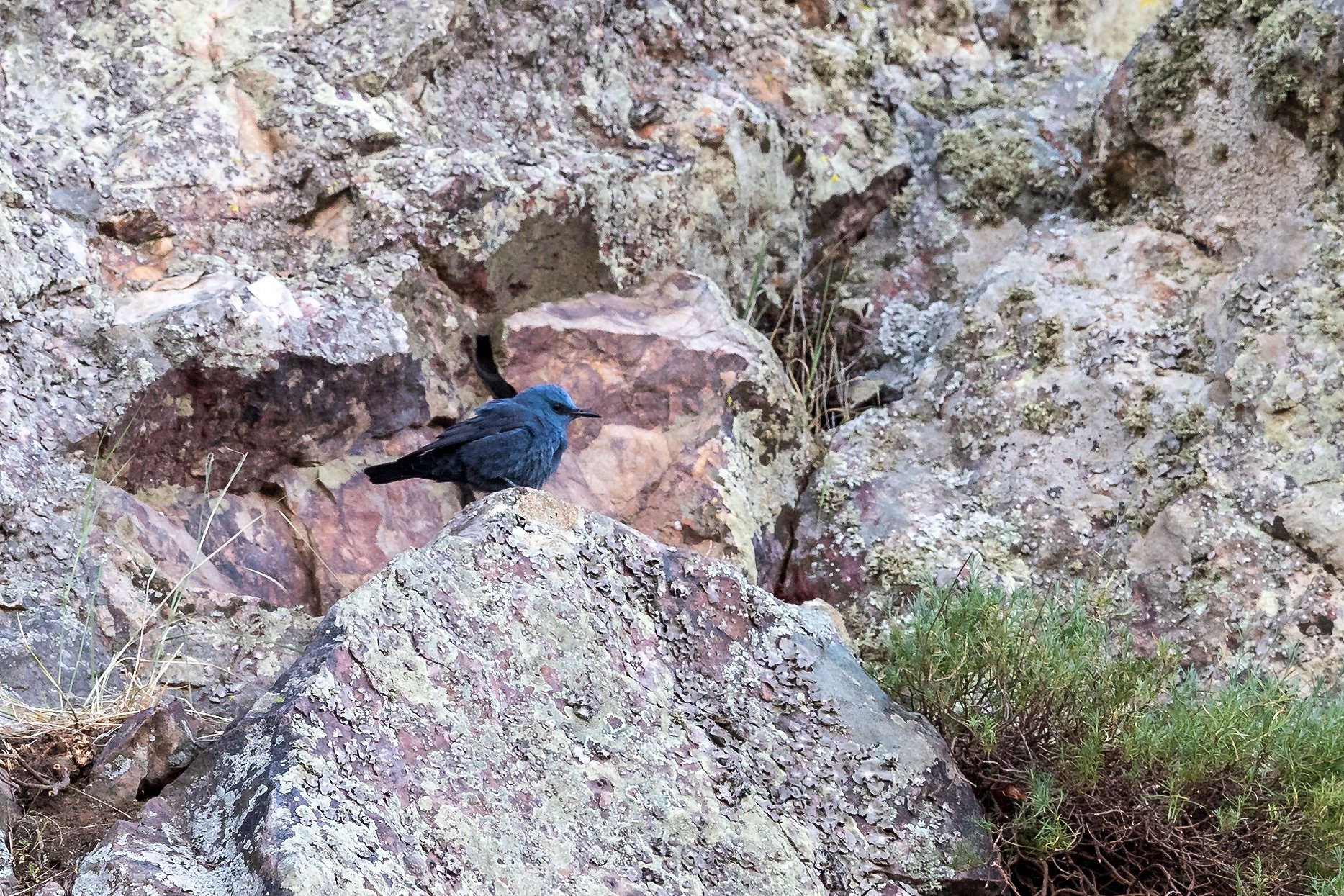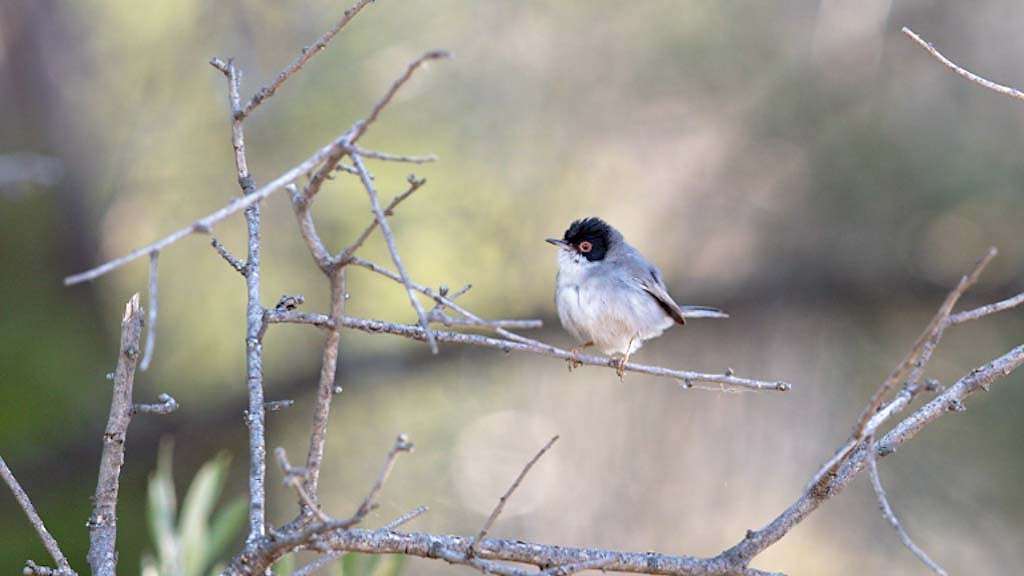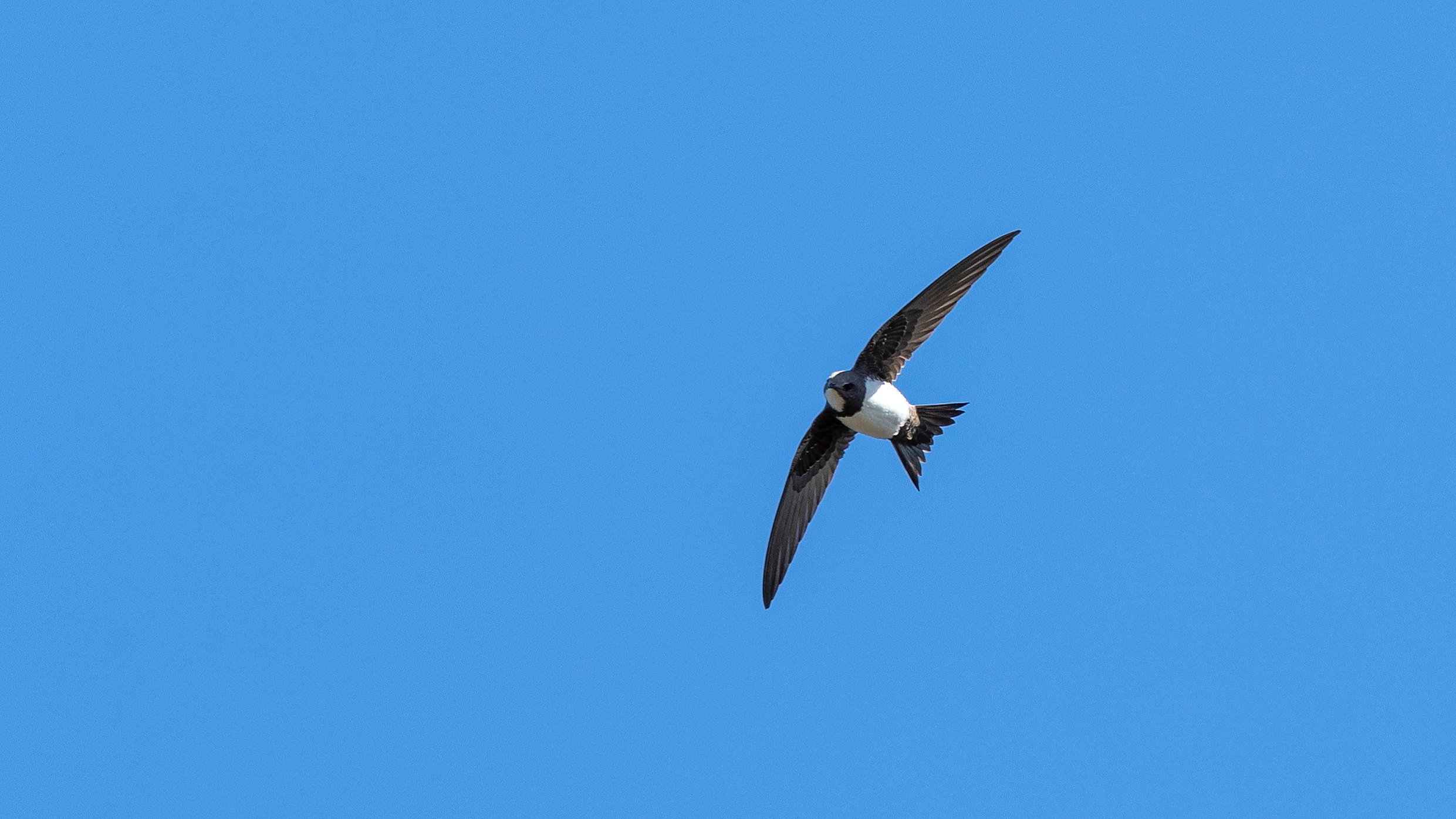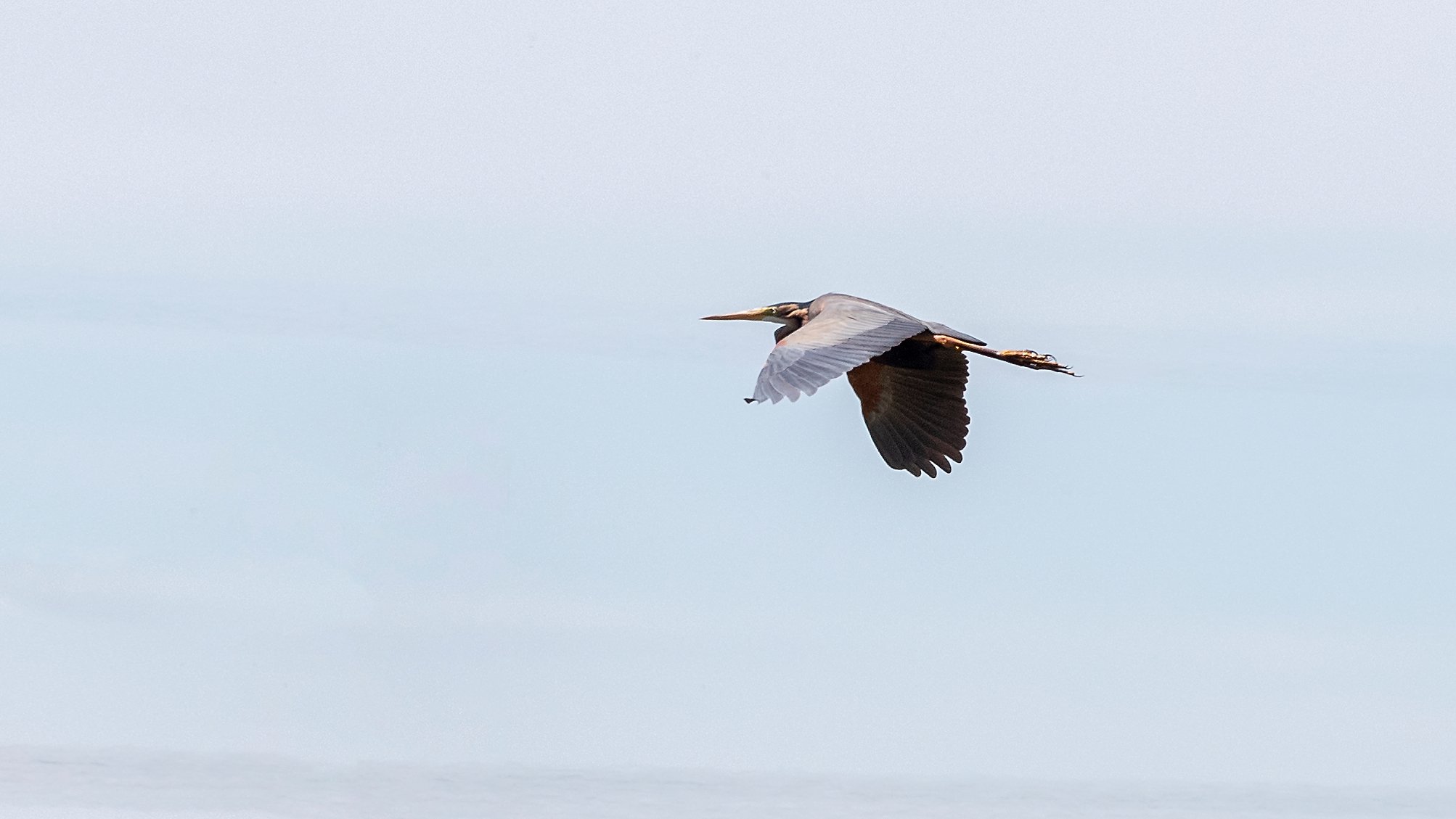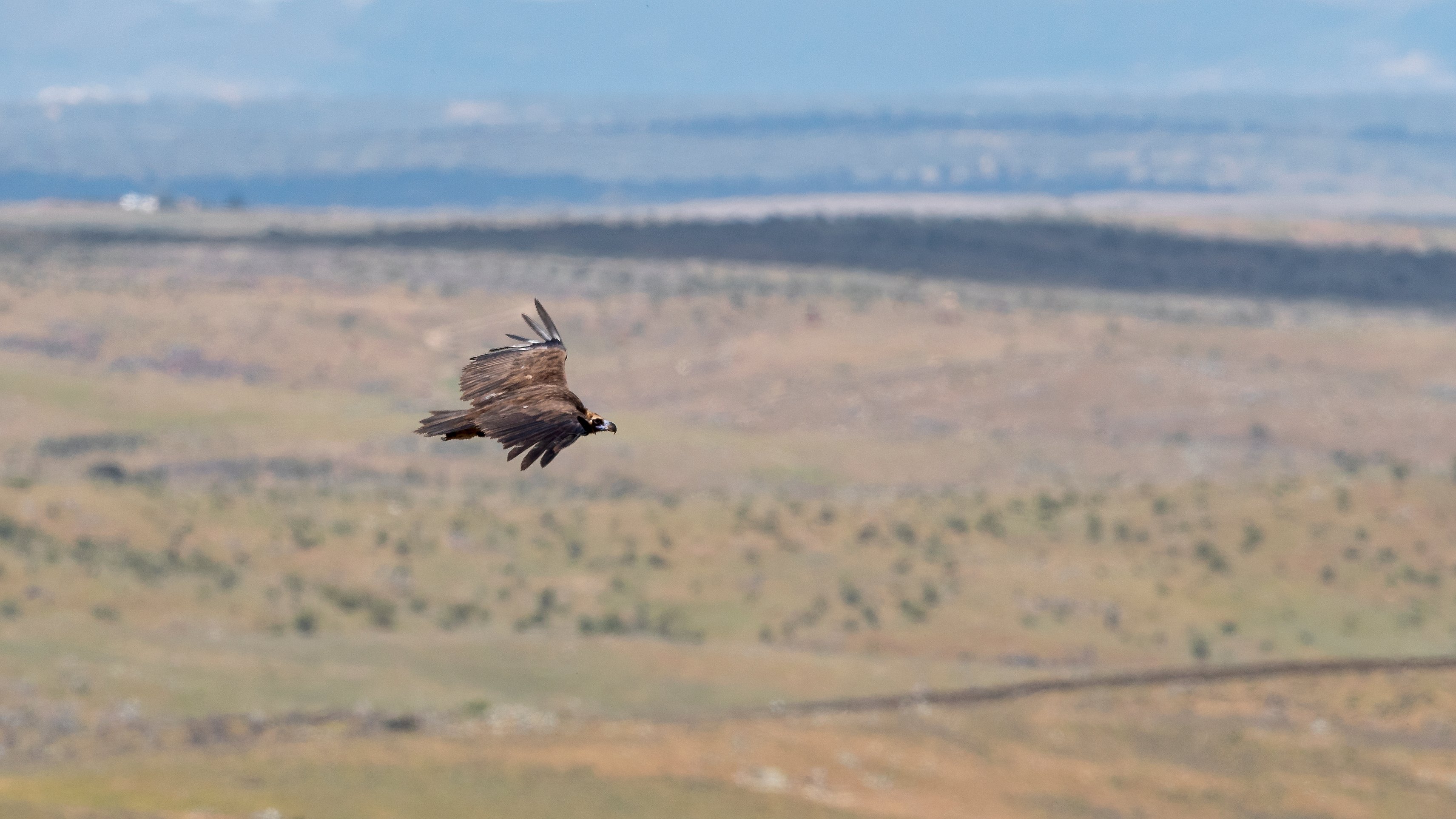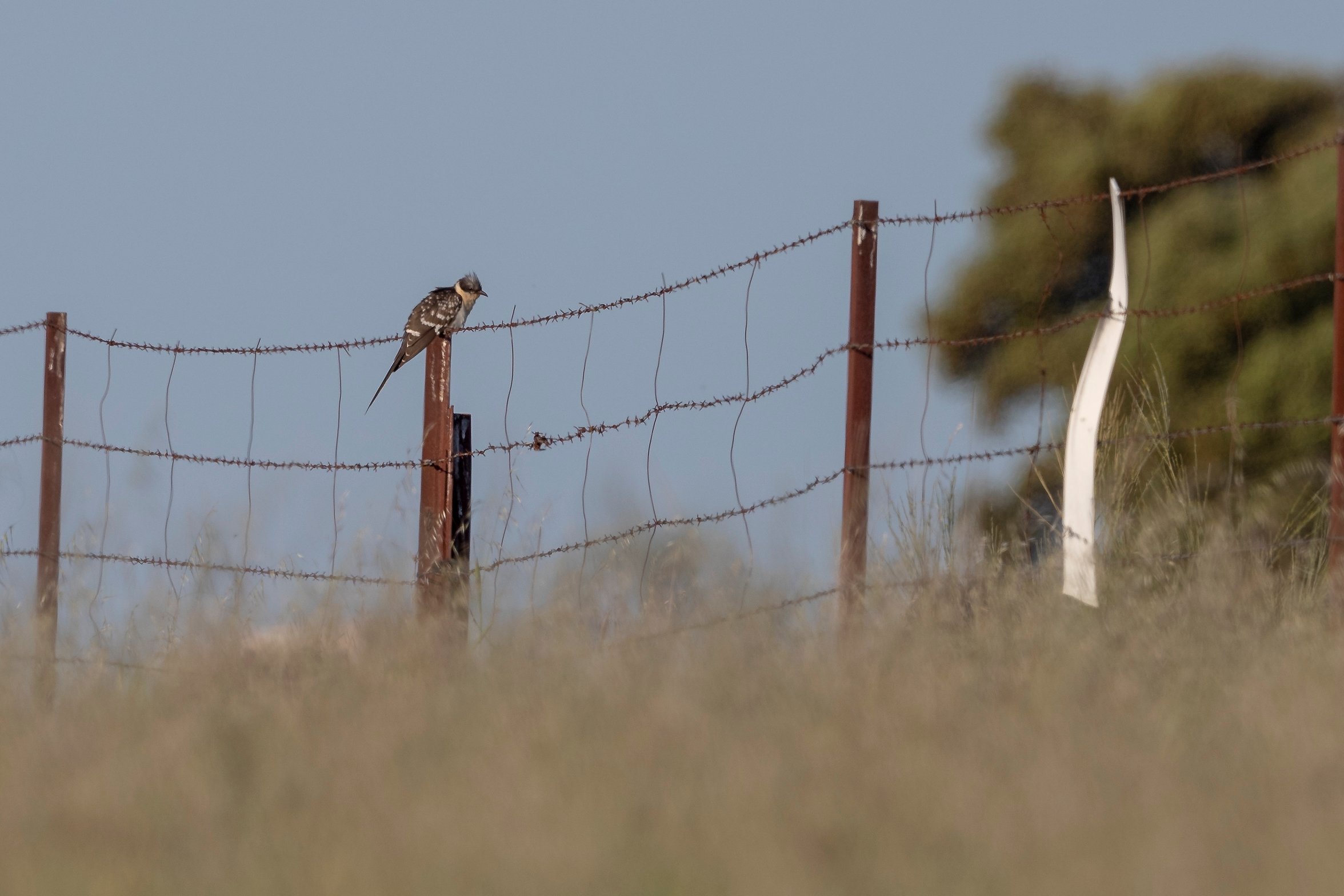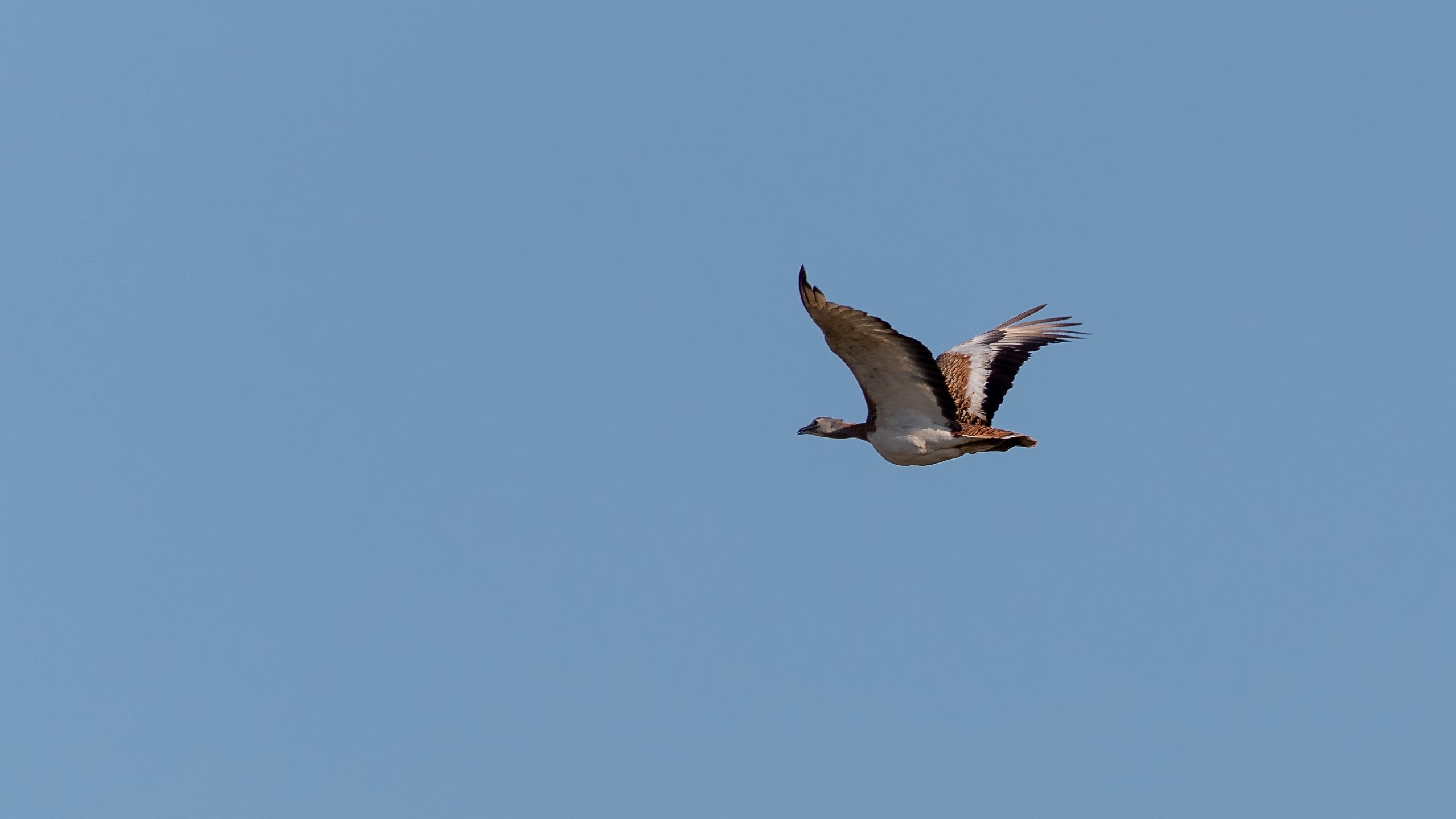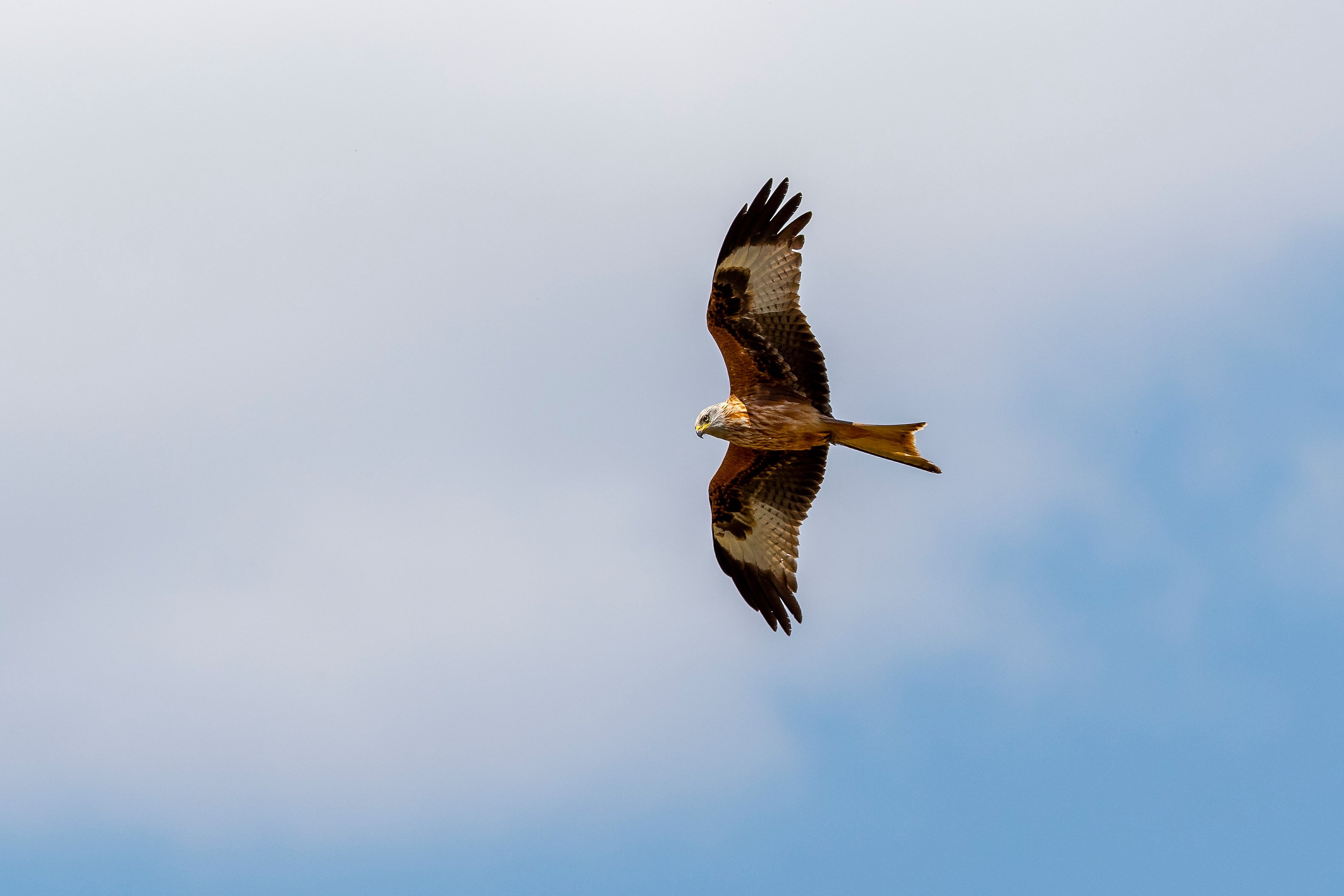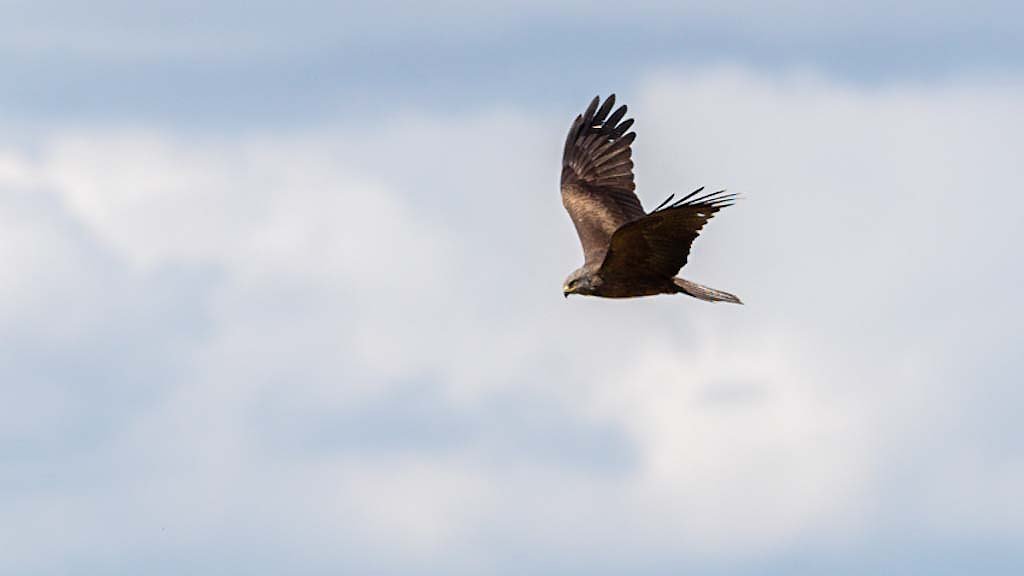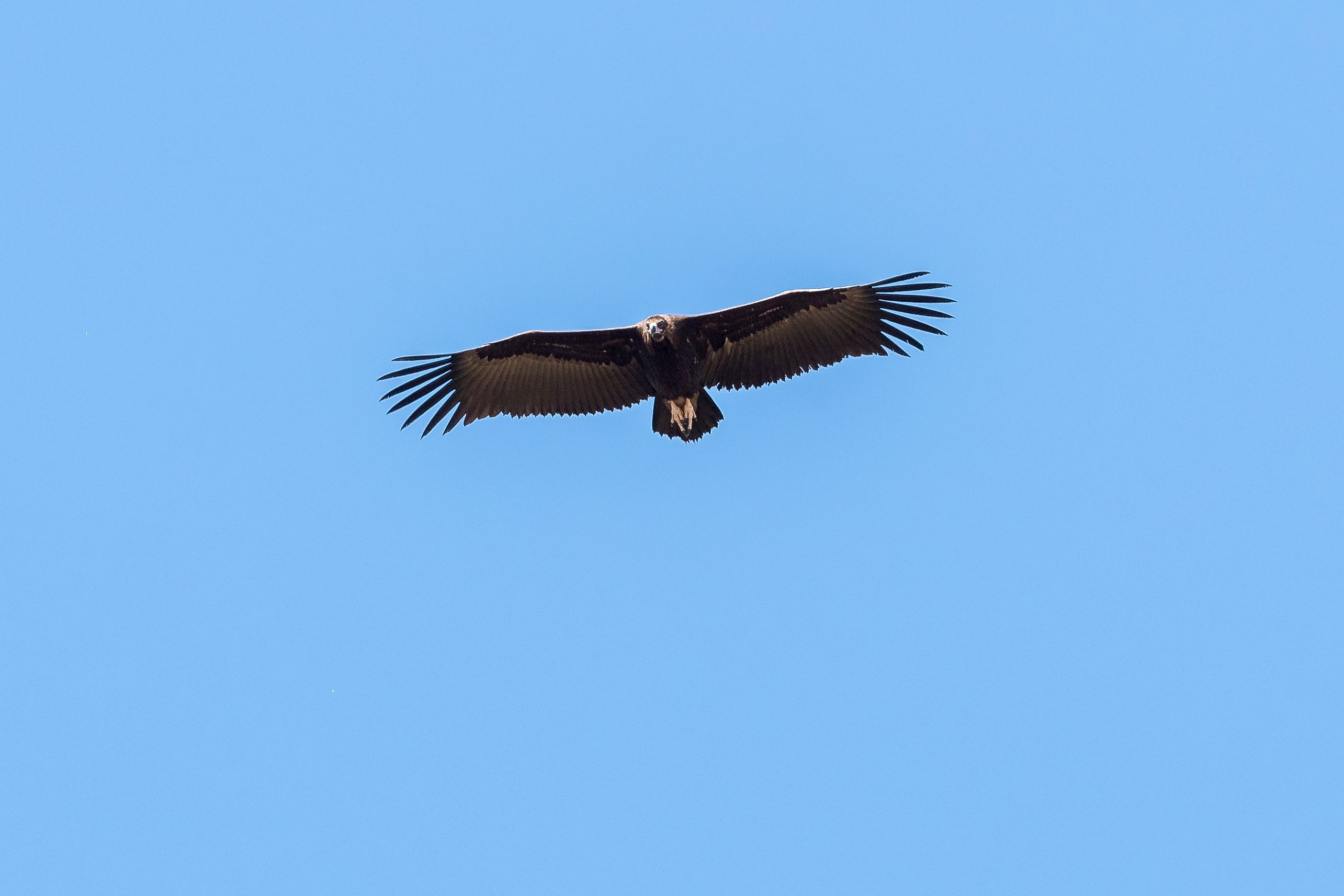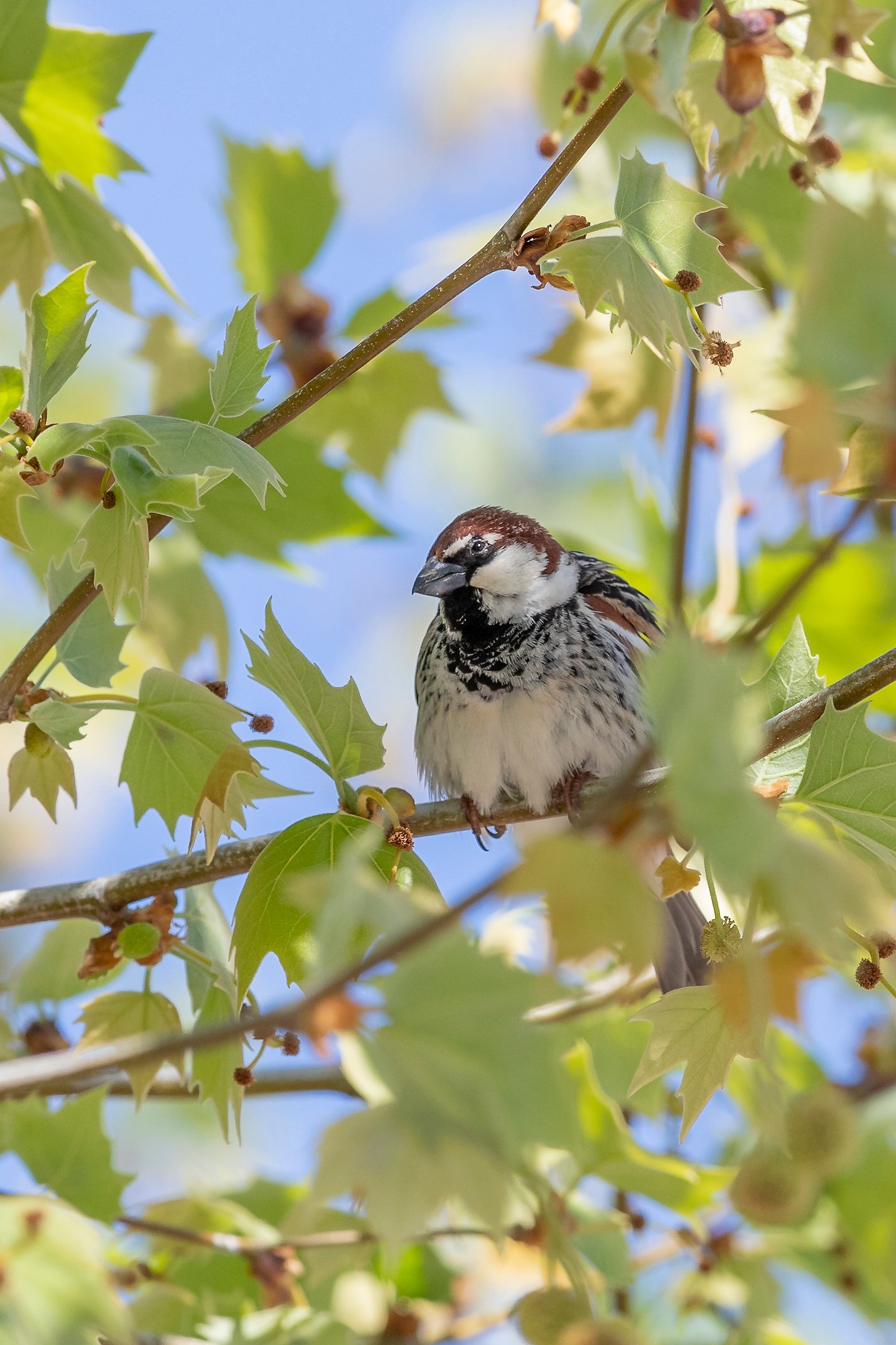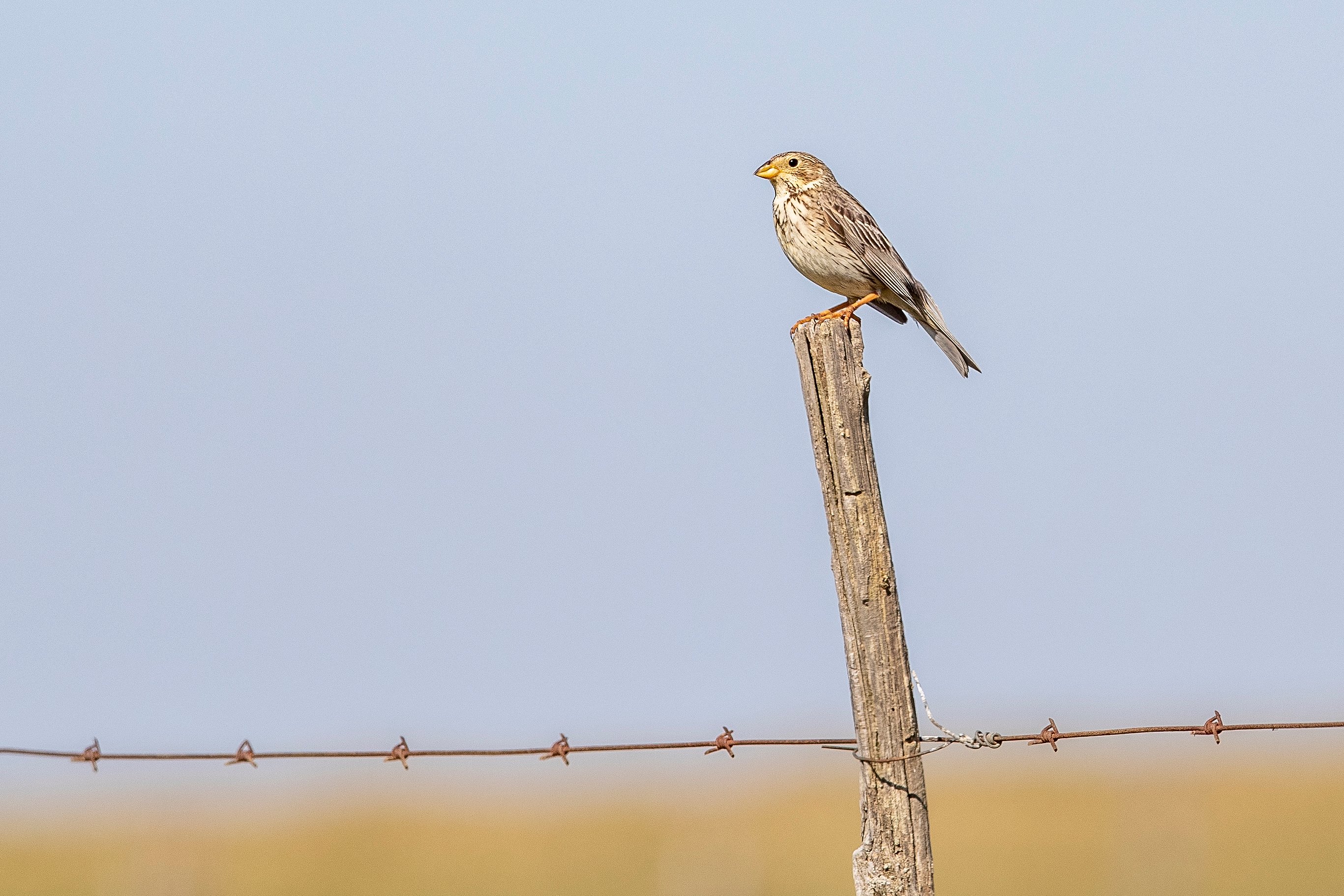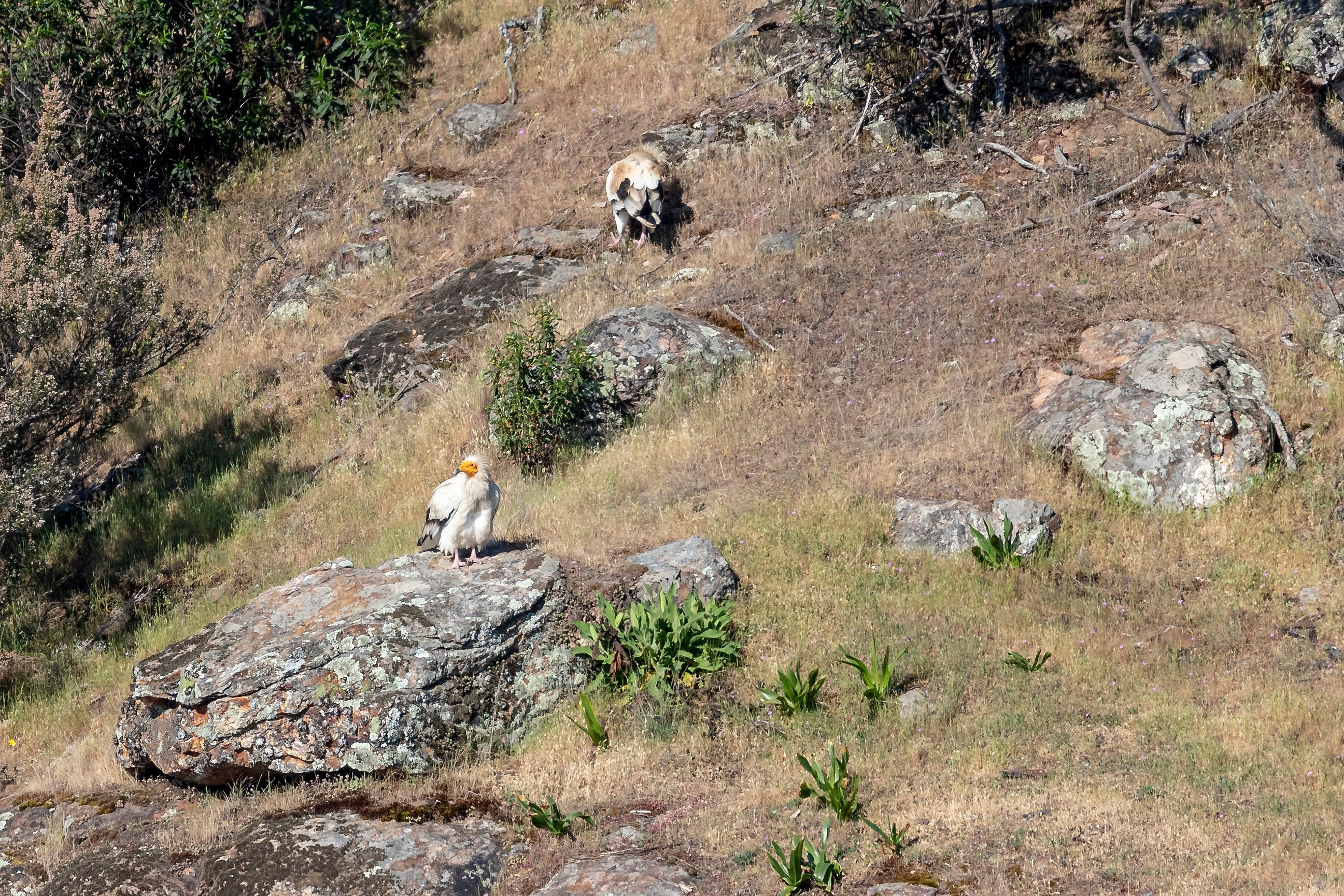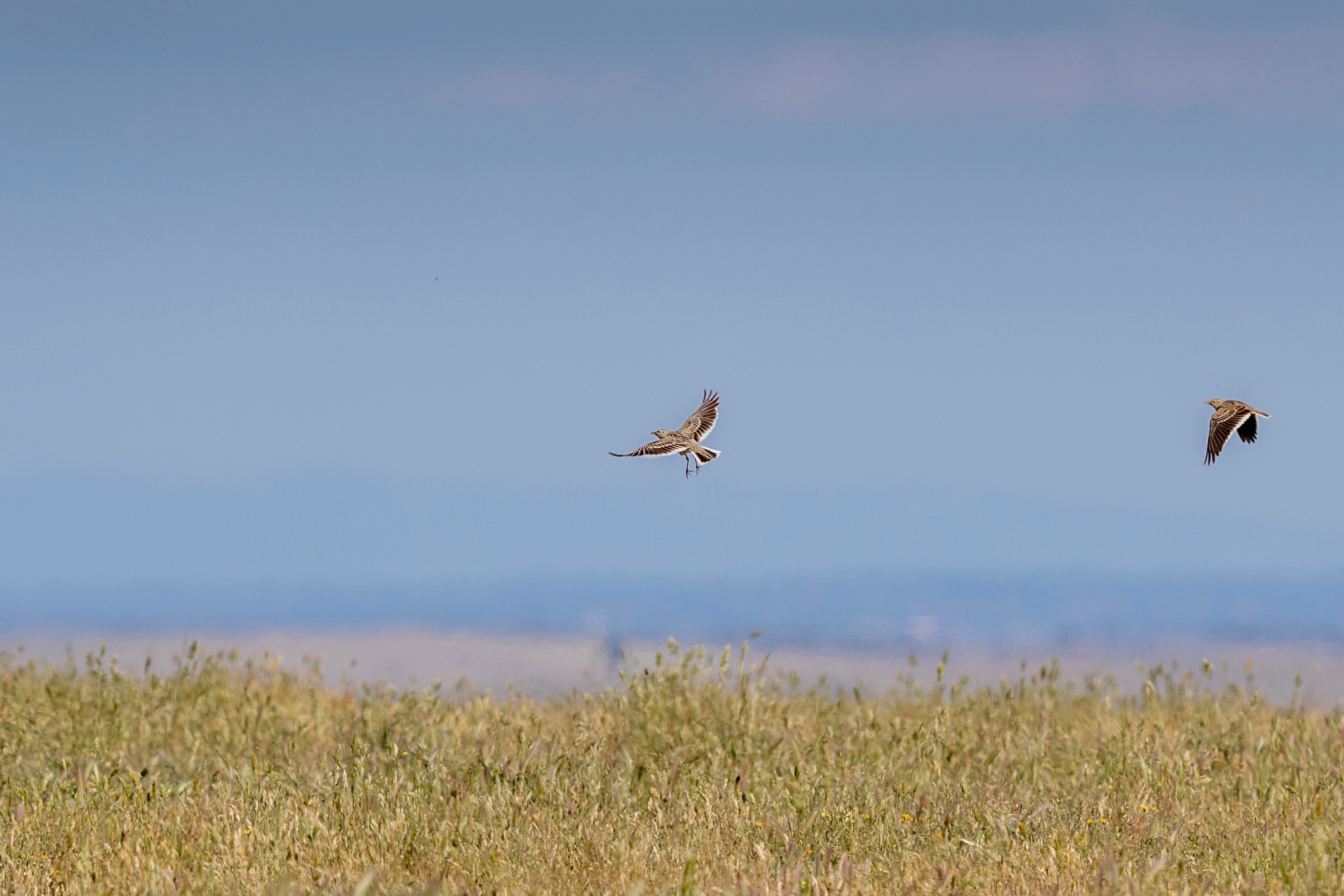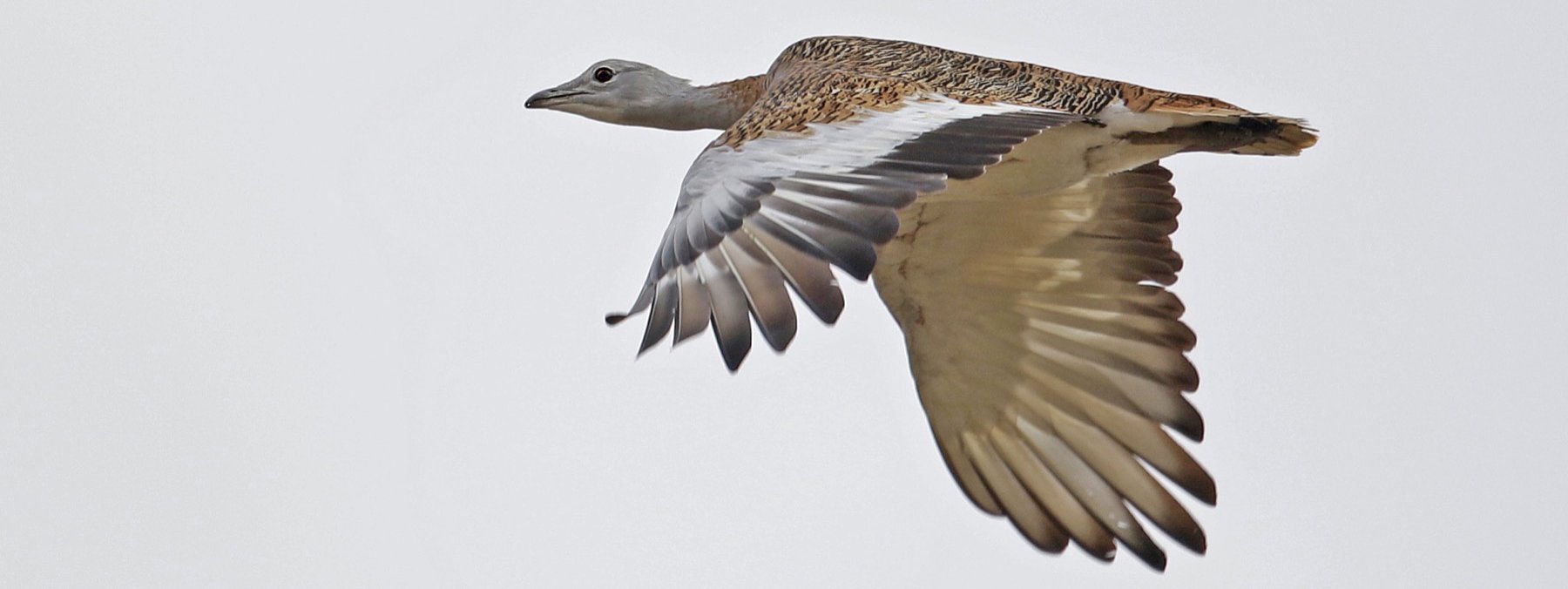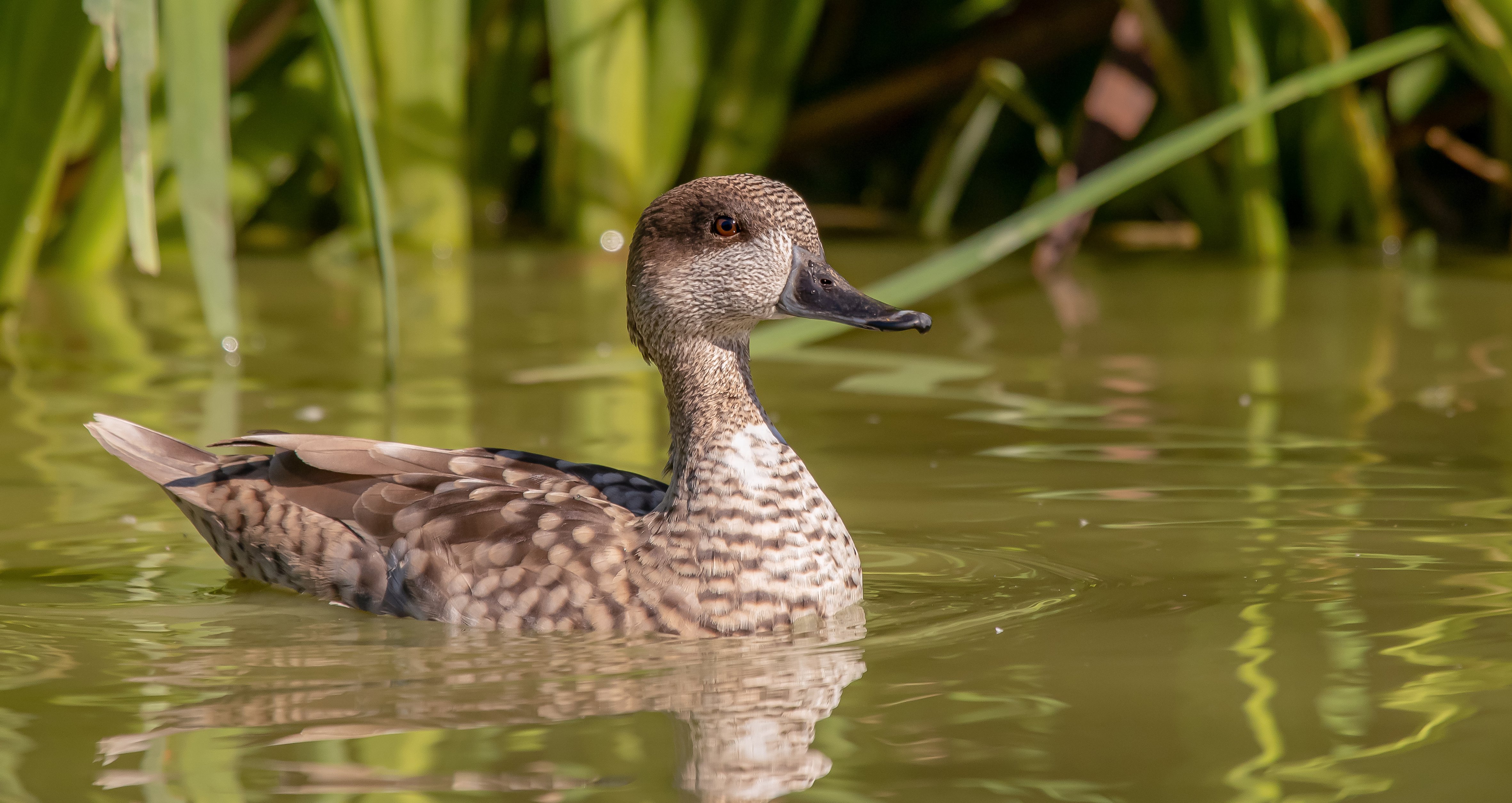Spain
Extremadura and Andalucia
An 8-day, small group birdwatching tour to Central & Southern Spain
Limosa’s spring birding tour to central and southern Spain combines two of Europe’s finest wildlife areas: the fabulous steppe grasslands and sierras of Extremadura, with the wetlands of Coto Doñana National Park.
Timed to coincide both with the excitement of spring migration and the breeding season for Iberia’s many resident birds, highlights of our April birdwatching tour to Spain include Marbled Duck, Great and Little Bustards, Western Swamphen, Pin-tailed and Black-bellied Sandgrouse, Bee-eater, Roller, Western Orphean Warbler and the endemic Iberian Magpie.
There is also nowhere better in Europe to see birds of prey, with Egyptian, Black and Griffon Vultures, Spanish Imperial Eagle and Black-winged Kite among many to look forward to.
Tour Dates & Prices
Tour Highlights
- Superb spring birding in central and southern Spain
- 4 nights in Extremadura - surely the best place in Europe for birds of prey
- Based at a splendidly situated hotel overlooking beautiful Monfragüe National Park
- Spanish Imperial Eagle, Great and Little Bustards, Black-bellied and Pin-tailed Sandgrouse, Iberian Magpie
- 3 nights in Andalucia at a very pleasant hotel close to Spain's celebrated Coto Doñana National Park
- Marbled Duck, Greater Flamingo, Glossy Ibis, Western Swamphen, Red-knobbed Coot, Iberian Grey Shrike
- Returning for our 33rd year (2024) to the region
- Expertly led by Limosa's English-speaking Spanish specialist Fernando Enrique Navarrete
Outline Itinerary
Fly to Madrid. We transfer west to our hotel in Extremadura - right on the doorstep of Monfragüe National Park. Night Monfragüe.
From our base near historic Trujillo, we have three full days to explore beautiful Monfragüe National Park and the steppes and sierras of Extremadura. Three further nights Monfragüe.
Leaving Extremadura today, we travel south into Andalucia and arrive at our lovely second hotel near the Coto Doñana National Park. Night Villamanrique de la Condesa.
Exploring the wetlands and woods of famous Coto Doñana National Park. Two further nights in Villamanrique de la Condesa.
We enjoy some final birding in Andalucia today. Fly Seville to the UK.
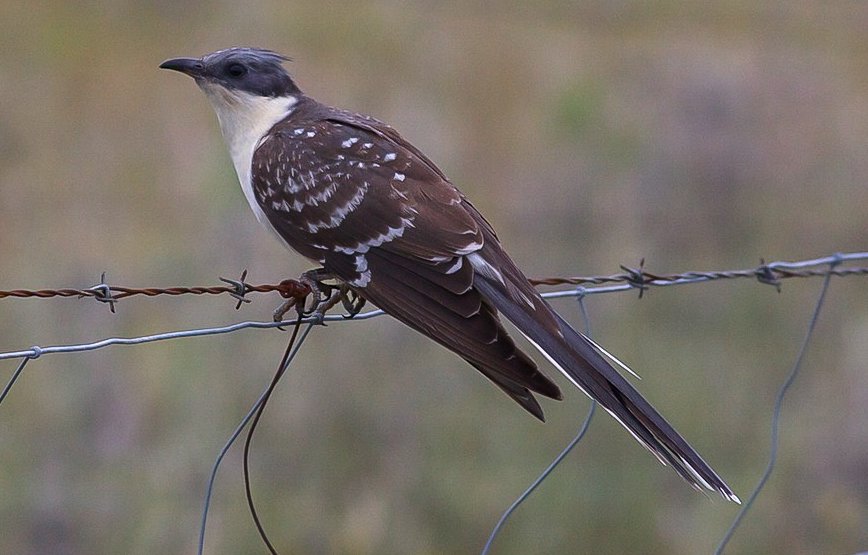
Spring comes early to central and southern Spain! From February onwards, waves of storks, raptors and innumerable passerine migrants start to arrive, making their first landfall in Europe along the coast of Andalucia. By April, Booted Eagles will be back over the dehesas with Red-rumped Swallows hawking the skies and the marshes a frenzy of activity with waterfowl, ibises, herons and egrets all busy nesting.
Our spring birdwatching tour to central and southern Spain kicks off in Madrid, from where we head west to Extremadura, the 'wild heart of Spain', and the fabulous Spanish steppes. We spend the first four nights of our tour staying at a wonderfully situated Hospederia which is right on the approach to beautiful Monfragüe National Park and with great birding right on the doorstep.
Nowhere else in Europe do birds of prey breed in such numbers or variety, while Little Bustards 'blow raspberries' and Great Bustards strut their stuff amid the rolling, flower-filled grasslands.
Black Stork, Black-bellied and Pin-tailed Sandgrouse, Great Spotted Cuckoo, Calandra Lark, Blue Rock Thrush, Iberian Grey Shrike, Spanish Sparrow and Rock Bunting are among many other possible treats in store.
Monfragüe itself is magnificent, famed for its spectacular landscape and hordes of Griffon Vultures, which throng the dramatic rock pinnacle of Peñafalcon. Both Black and Egyptian Vultures also breed in the park, along with Red and Black Kites and all five Iberian eagles: Bonelli's, Booted, Short-toed Snake, Golden and Spanish Imperial. We will seek the elusive Black-winged Kite over the beautiful dehesa woodlands, scan for secretive Eurasian Eagle Owl on the cliffs and pay a visit to the historic old town of Trujillo, with its splendid medieval architecture adorned by numerous Lesser Kestrels, Pallid Swifts and White Storks.
Leaving Extremadura, we then travel south into Andalucia for a three-night stay near Spain’s most illustrious national park, the Coto Doñana.
This extraordinary corner of Spain also shelters some of the Europe’s rarest breeding birds: Eurasian Spoonbill, Squacco Heron, Glossy Ibis, Greater Flamingo and Red-knobbed Coot haunt the marshes with exotic Iberian Magpies in the warm, scented pinewoods. Chunky Western Swamphens clamber about the reeds and dappled Marbled Ducks tuck themselves away on quiet lagoons with a variety of waders and terns patrolling the marismas.
In April, colourful European Rollers, European Bee-eaters and Woodchat Shrikes will be arriving, Hoopoes probe the sandy tracks and the jangling song of European Serins add to the delights of spring in southern Spain.
Limosa has been operating a wide-ranging annual programme of birdwatching tours to Spain since 1990, including dozens of trips to Extremadura and Andalucia. Add the unrivalled expertise of our English-speaking Spanish specialist Fernando Enrique Navarrete, who was born and raised in Andalucía, and this classic, two-centre tour to Central and Southern Spain is hard to beat!
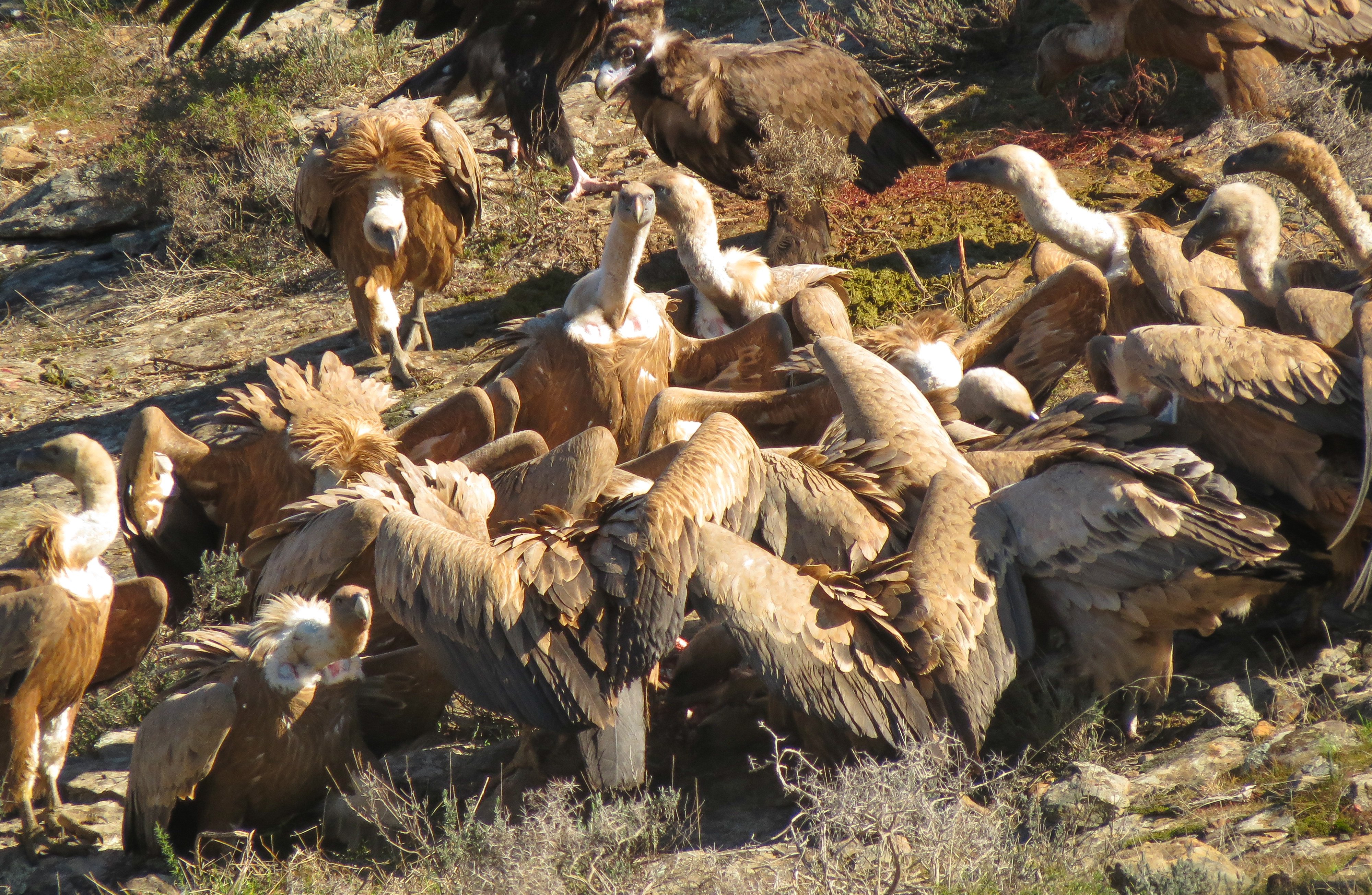
Day 1
TO MADRID AND MONFRAGÜE
Our spring birdwatching tour to central and southern Spain begins with a morning flight to Madrid. We then transfer west by road toward the rolling steppe, beautiful oak woodlands and wild sierras of Extremadura. It is a three to four hour journey, but we will pause along the way to enjoy a delicious tapas lunch and to scan the flowing spring grasslands for our first Montagu’s Harriers and Bee-eaters and possibly try for the elusive Black-winged Kite!
Early evening arrival at our comfortable hotel, a wonderfully situated Hospederia that lies right on the approach to magnificent Monfragüe National Park. This will be our base for the first four nights of the holiday. Cattle Egrets and White Storks forage for lizards and grasshoppers in the pastures, handsome Spanish Sparrows and Spotless Starlings nest about the scattered farmsteads and Black Kites float effortlessly over the grasslands. Night at a hotel overlooking Monfragüe NP
Days 2 - 4
MONFRAGUE NATIONAL PARK AND THE STEPPE GRASSLANDS OF EXTREMADURA
Beautiful Monfragüe National Park and the surrounding steppe grasslands are typified by mile-upon-mile of unspoilt countryside, where centuries of traditional land management have created the unique dehesas - a timeless, park-like habitat of cork and evergreen oaks, foraged by pigs and alive in spring with the calls of Hoopoes, Woodlarks, Rock Sparrows, Woodchat Shrikes and exotic Iberian Magpies. Rocky fields and roadside verges brim with an exuberance of wildflowers at this season, Sardinian Warblers give their scolding ‘rat-a-tat-tat’ call and pink-chested Iberian Grey Shrikes perch boldly beside the road.
This is perhaps the finest spot in all of Europe for birds of prey and we can expect to encounter a dozen or more different species during our stay. Immense Griffon Vultures patrol the skies, along with Egyptian Vulture and the even more massive Black Vulture, Red and Black Kites, Peregrine and up to five species of eagle: Short-toed Snake, Booted, Bonelli’s, Golden and the endemic Spanish Imperial.
The latter is one of the world’s rarest and most endangered raptors, but we have good chances of finding it here. Many of these species breed on or around the dramatic rock pinnacle of Peñafalcon, which lies at the heart of the national park and we will spend time enjoying the spectacle.
Another large soaring bird, the scarce Black Stork, is perhaps easier to see well at Monfragüe than anywhere else we know and we will also check a favourite spot for the powerful Eurasian Eagle Owl.
Truly a magical place, Monfragüe’s Cistus and herb-scented hillsides, rocky ravines and plunging valleys are equally rich in small birds. Crag Martin, Thekla Lark, Blue Rock Thrush, secretive Dartford, Subalpine and Western Orphean Warblers, Short-toed Treecreeper, Hawfinch and Red-billed Chough are all present in spring, with parties of Alpine Swifts sweeping the skies.
The plains that stretch away to the south are a vital stronghold for the aristocratic Great Bustard and early mornings offer the best chance to see these magnificent birds (don’t worry, it doesn’t get light here until about seven!), before the grasslands are lost beneath a sea of shimmering heat-haze. With Hoopoes, Stone-curlews and Calandra Larks calling all about us, from our vantage point overlooking the steppe we shall scan for the dominant males as they perform their extraordinary display. It is one that culminates in the great birds shaking and turning themselves ‘inside-out’ to become a mass of white feathers; variously described as looking like a foaming bath or a giant blooming chrysanthemum!
We should also see and hear the smaller Little Bustard here too, the males inflating their black and white necks and throwing back their heads to blow raspberries at one another across the fields!
The grasslands are interrupted by bands of low rocky sierras and slow-flowing rivers and for sheer variety of birds this whole region is hard to beat. Little Bittern, Night Heron, Pin-tailed and Black-bellied Sandgrouse, Greater Short-toed Lark, Spectacled Warbler, Penduline Tit, Golden Oriole and (with luck) the increasingly scarce Black Wheatear are among many that await our discovery. Spanish Sparrows are actually rather scarce in Spain but can be locally common here with flocks of several hundred sometimes seen. We may also hear the harsh rattling cackle of a Great Spotted Cuckoo, watch Red-rumped Swallows swooping low or see a Little Owl scowling at us from one of the massive boulders so characteristic of Extremadura's ‘hard lands’.
We will drop by at a productive wetland site that is home to Purple Heron, Savi’s Warbler and Purple Swamphen and have further chances to look for Black-winged Kite. Out in the region’s rice fields, we may encounter two introduced finches: Common Waxbill and the startling Red Avadavat in their white-spotted breeding plumage, males of the latter look not unlike a fast-flying strawberry!
Before leaving Extremadura, we will pay a visit to Trujillo and spend some time wandering the cobbled streets of this historic old town. The Conquistadors may have long since departed this famous town but there are still plenty of nesting White Storks, Lesser Kestrels and Pallid Swifts to enjoy over a quiet drink in the beautiful main piazza. Bring your camera as on a clear day, the views across the plains from atop the medieval battlements are unrivalled! Three further nights at our Monfragüe hotel
Day 5
SOUTH TO ANDALUCIA AND COTO DOÑANA
We bid a reluctant farewell to Monfragüe this morning and travel south along good roads towards Seville, no doubt breaking our journey with one or two birding stops along the way.
From Seville, we swing west and continue on to reach our second hotel not far from the sleepy Andalucian village of El Rocío, with its characterful whitewashed buildings overlooking the famous Coto Doñana National Park. We will aim to arrive at our hotel in time to enjoy some late afternoon birding. Night near El Rocio
Days 6 - 7
COTO DOÑANA NATIONAL PARK
Covering an area of almost half a million acres, the marismas (marshes) at the mouth of the Guadalquivir River comprise one of the largest and most important wetlands in Europe: the Coto Doñana National Park. Our birding here might well begin with a look at some of the nearby wetland areas as well as the park’s impressive Visitor Centres. Fernando was born and raised in Andalucia and presently lives close by the National Park, so this is a region he knows especially well.
Among a rich diversity of birds, Doñana boasts many that are rare or absent elsewhere in Europe. If water levels are right, the marshes can be crammed with birds such as Spoonbill, Purple Heron, Little Egret, Whiskered Tern, Collared Pratincole, alongside regional specialities that could include Glossy Ibis, Greater Flamingo, Squacco Heron and Western Swamphen.
Depending on water levels, we may also visit some less well-known lagoons around the fringes of Doñana that can hold rare and localised breeding species such as Red-knobbed Coot, White-headed Duck and Marbled Teal.
No visit to the Coto would be complete without a trip to the protected zone of the Corredor Verde and the Dehesa de Abajo. The former is always a great place to watch for raptors and is one area where the rare Black-winged Kite and Booted Eagle, Europe’s smallest eagle, hunt.
The Dehesa de Abajo is a sight to behold in spring, with large expanses of flowering meadows where Bee-eaters sweep low, feeding over multi-coloured carpets of scented flowers.
The surrounding wild olives hold one of the largest concentrations of White Storks nests in Spain, where the birds nest on top of the trees.
A flooded lagoon at the edge of the dehesa can hold large numbers of duck, including Red-crested Pochard, as well as Gull-billed and Black Terns which often hawk for insects.
As the day progresses, we can enjoy visits to various hides and walk through the resin- scented pinewoods and shady Cork Oak groves. Flocks of Iberian Magpies flit through the lower branches, Crested Tits and Firecrests work through the canopy and furtive Dartford and Sardinian Warblers scold us from the scrub.
Along tracks to the José Antonio Valverde Visitors' Centre on the fringes of the northern marshes, migrant Spectacled and Subalpine Warblers can often be found, along with Common and sometimes Great Spotted Cuckoos.
The sandy tracks that bisect the drier, drained farmlands hold almost all the southern European larks: Crested Larks are our constant companions with their melancholy song given in flight and others we could see include Thekla, Calandra and both Greater and Lesser Short-toed Larks.
Migrants passing through the area in spring can include Night Herons, Hoopoes, Black-eared Wheatears and Red-rumped Swallows. Iberian Grey and Woodchat Shrikes survey the scene and, as the daytime temperature starts to rise, birds of prey become ever more noticeable. In April, these can include Red Kite and the ubiquitous Black Kite, Marsh Harrier and Short-toed Snake Eagle. With luck, we may find the endangered Spanish Imperial Eagle, which nests in the national park. Two further nights near El Rocio
Day 8
COTO DOÑANA TO SEVILLE, FLY LONDON
We should have time to enjoy some final birdwatching in and around the Coto before heading to Seville for our flight back to the UK, where our spring birdwatching holiday to Spain concludes.
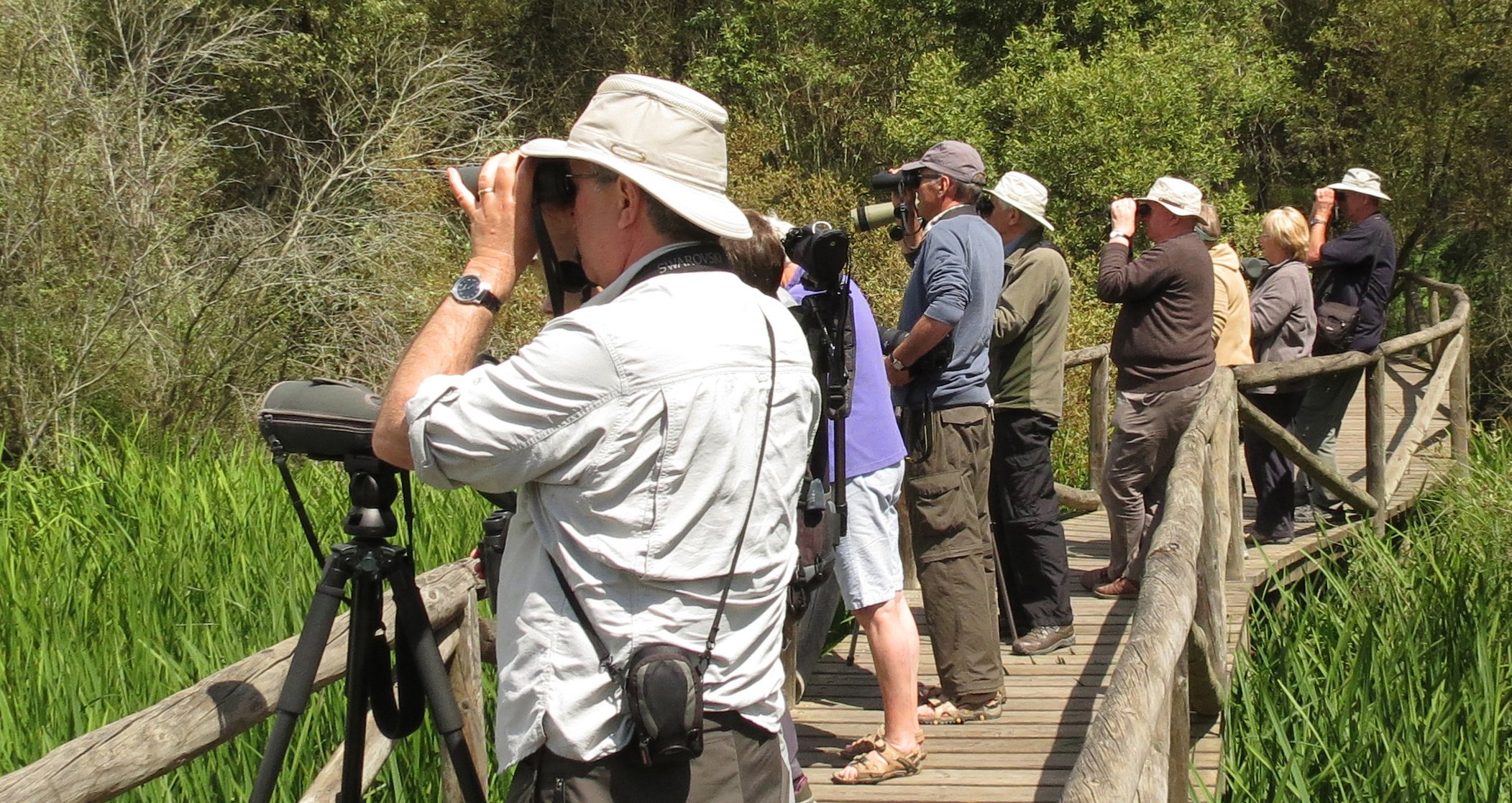
WHAT TO EXPECT
A two-centre birdwatching tour to central and southern Spain combining two of Europe’s finest wildlife areas: the fabulous steppe grasslands and sierras of Extremadura, with the wetlands of Coto Doñana National Park.
Timed to coincide both with the excitement of spring migration and the breeding season for Iberia’s resident birds, highlights of our late April bird tour to Spain might include Great and Little Bustards, Western Swamphen and the endemic Iberian Magpie. There is also nowhere better in Europe to see birds of prey and vultures, with Spanish Imperial Eagle, Black-winged Kite and Egyptian, Black and Griffon Vultures among the many to look forward to.
The weather is generally fine at this time of year although, even in southern and central Spain, there can be April showers! Average daytime temperatures here in April typically range between 17-22C (62-72F), occasionally hotter.
Opportunities for bird photography can be good-excellent, especially raptors and storks at Peñafalcon in Monfragüe National Park.
BIRDS
135-165 species
ACCOMMODATION
7 nights accommodation in Spain, at two good and comfortable hotels.
Our tour commences in Extremadura, where we spend four nights overlooking magnificent Monfragüe National Park, some 25 miles north of the town of Trujillo. All rooms have private facilities.
Moving to Andalucia, we then have three nights at a fine hotel not far from El Rocio, on the fringes of the Coto Doñana National Park. All rooms have private facilities.
MEALS
All main meals are included in the price, commencing with a late tapas lunch following our arrival in Spain on Day 1 and concluding with lunch in Andalucia on Day 8.
Breakfasts will be at the hotel, lunches may variously be taken at a local venta (cafe) or as picnics in the field and dinners will be a mix of local restaurants and at the hotel.
WALKING
Easy short walks. One uphill walk followed by a steep climb up a series of stone steps to reach the viewpoint overlooking the heart of Monfragüe National Park is optional. Wear comfortable walking shoes or lightweight boots with sturdy corrugated soles for grip.
TRAVEL
Despite the end of pandemic restrictions, we have taken the decision to continue to price our holidays as excluding international flights.
To keep the process as simple as possible, we are working very closely with a dedicated agent at Travel Counsellors, Sacha Barbato, who is essentially now our “in house” flight consultant.
Sacha will be able to advise you which flights we are recommending for each holiday, and he will be able to book these for you.
This will also sometimes give you the option to travel from a regional airport if you prefer.
GROUND TRANSPORT
By minibus.
Tour Gallery
View a gallery of images for this tour below, click on an image to view as full size with caption
